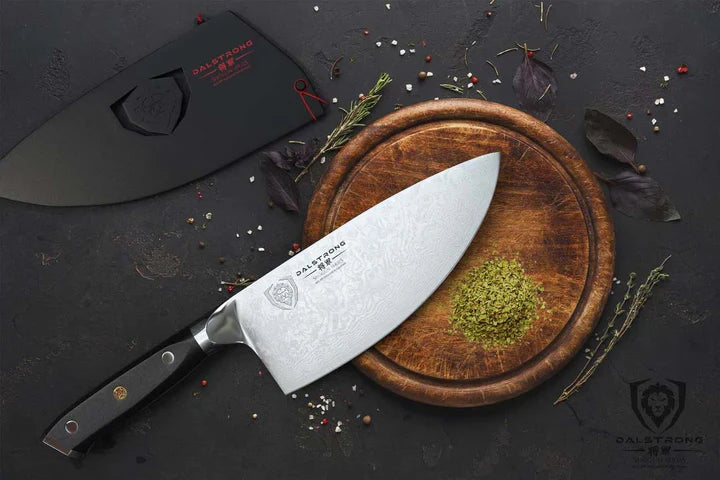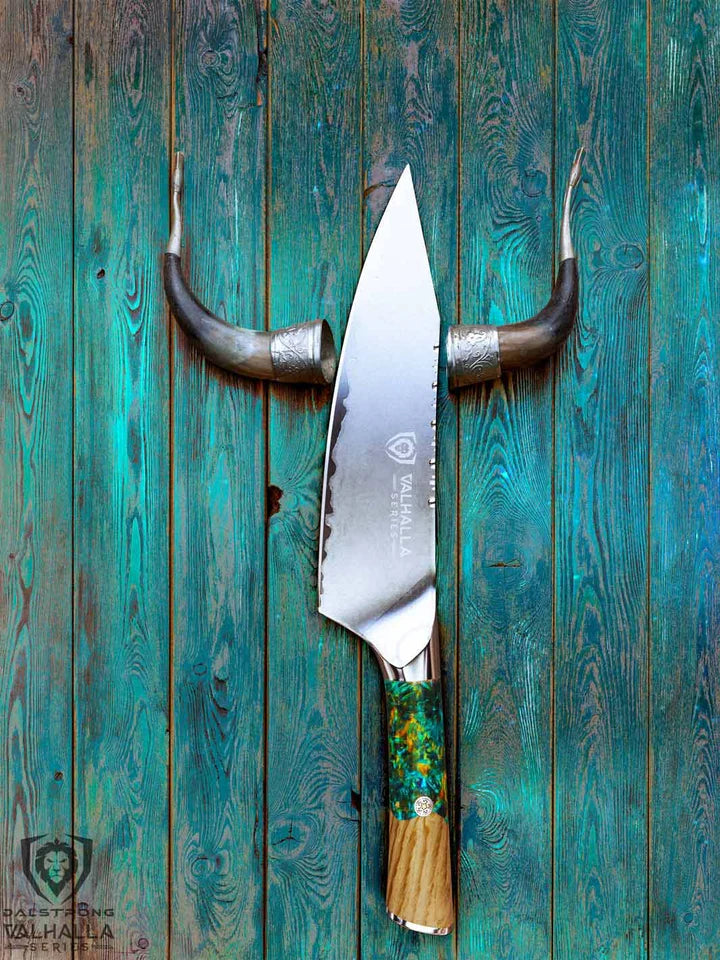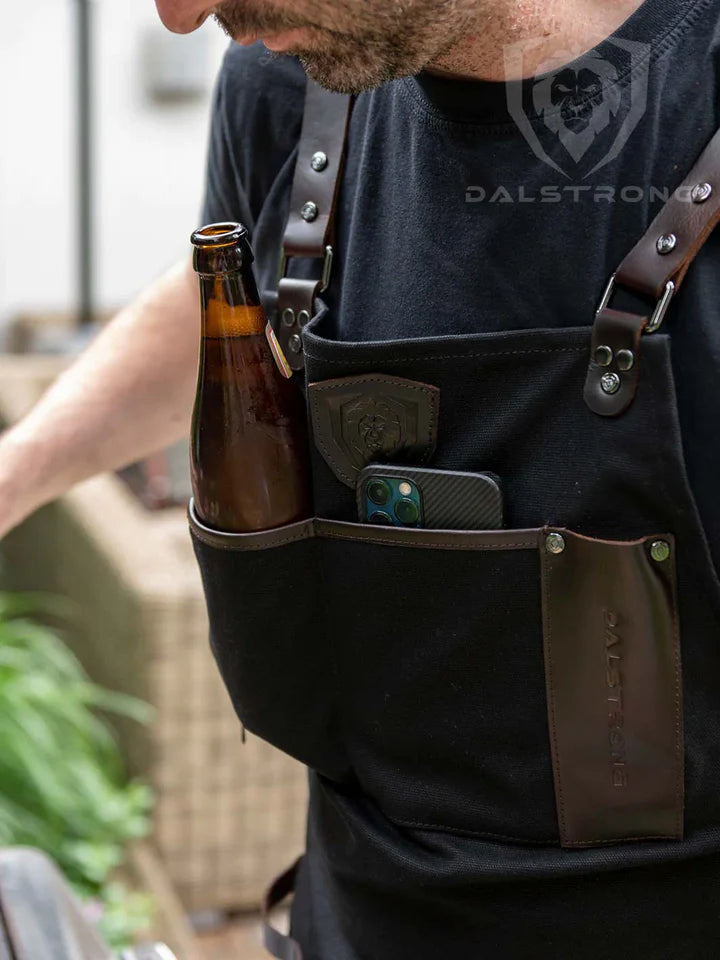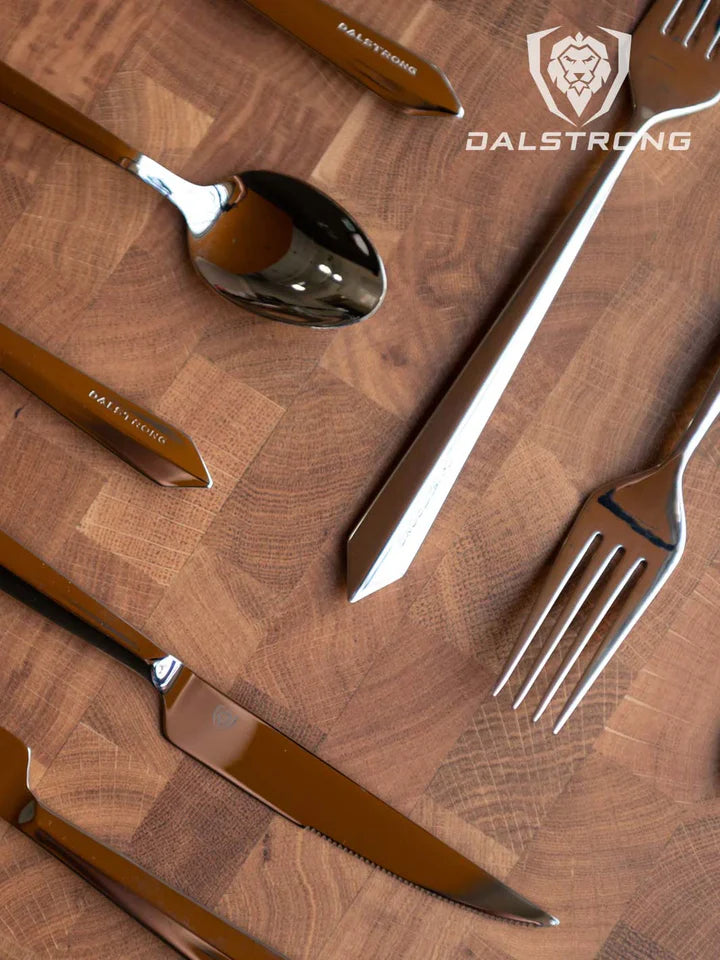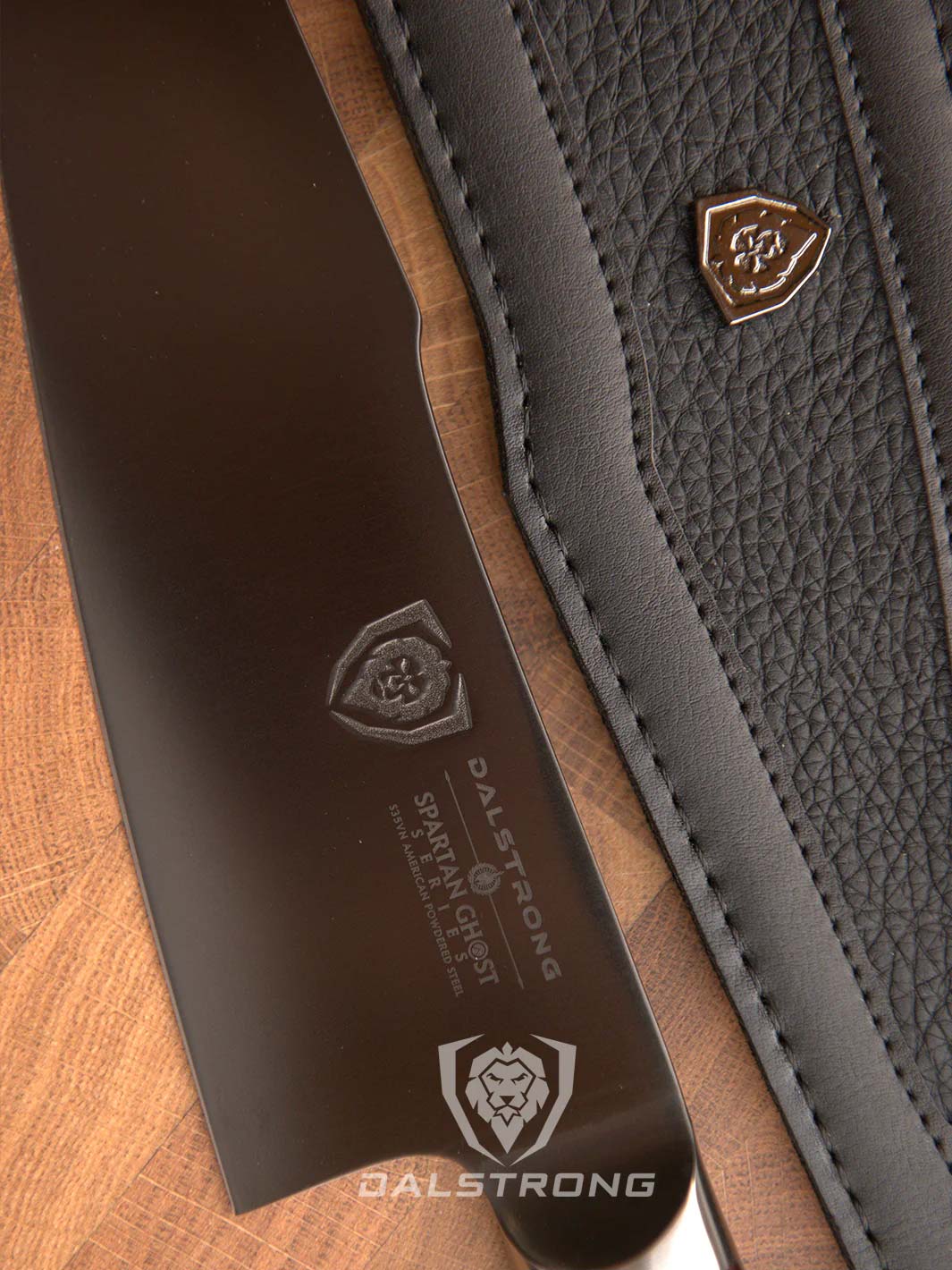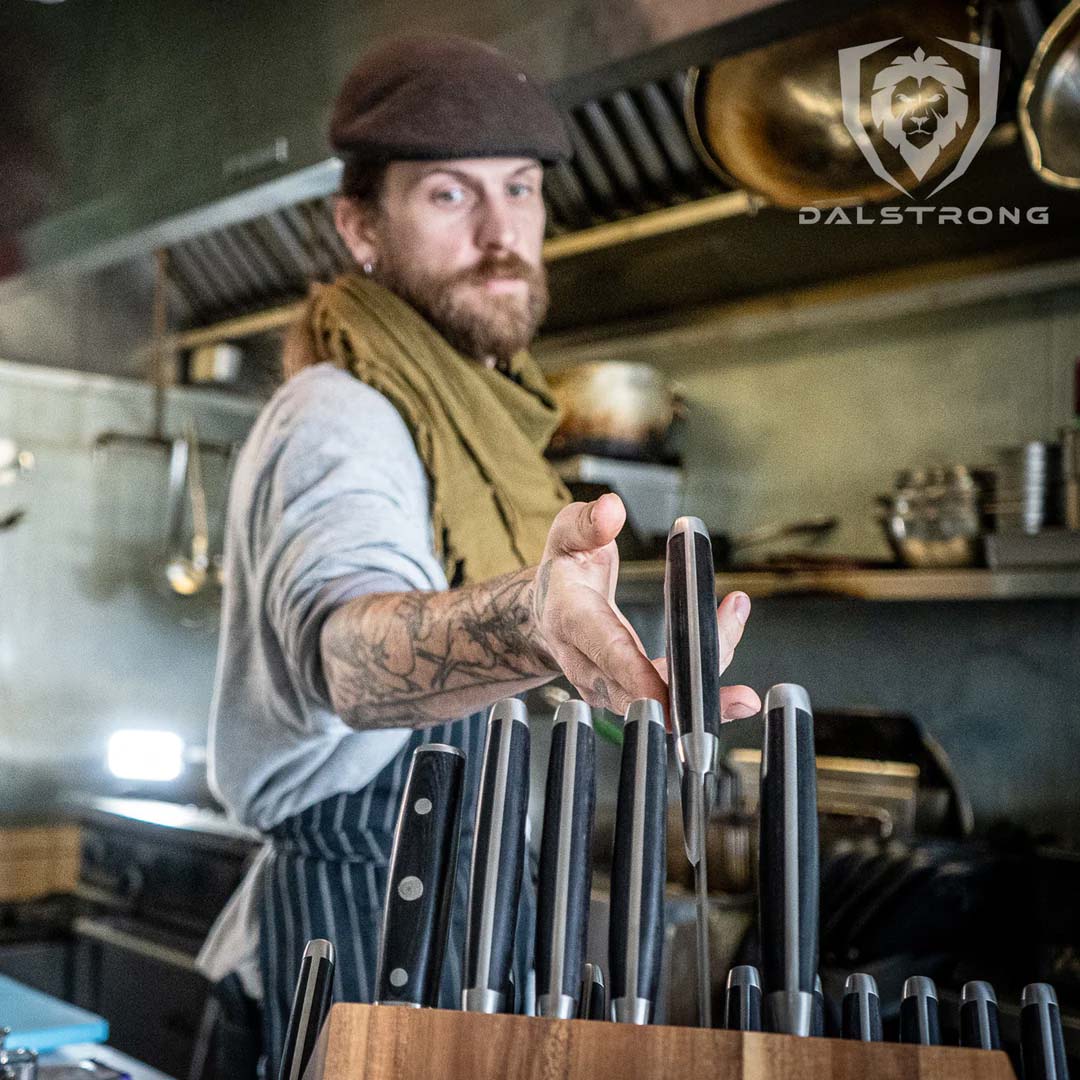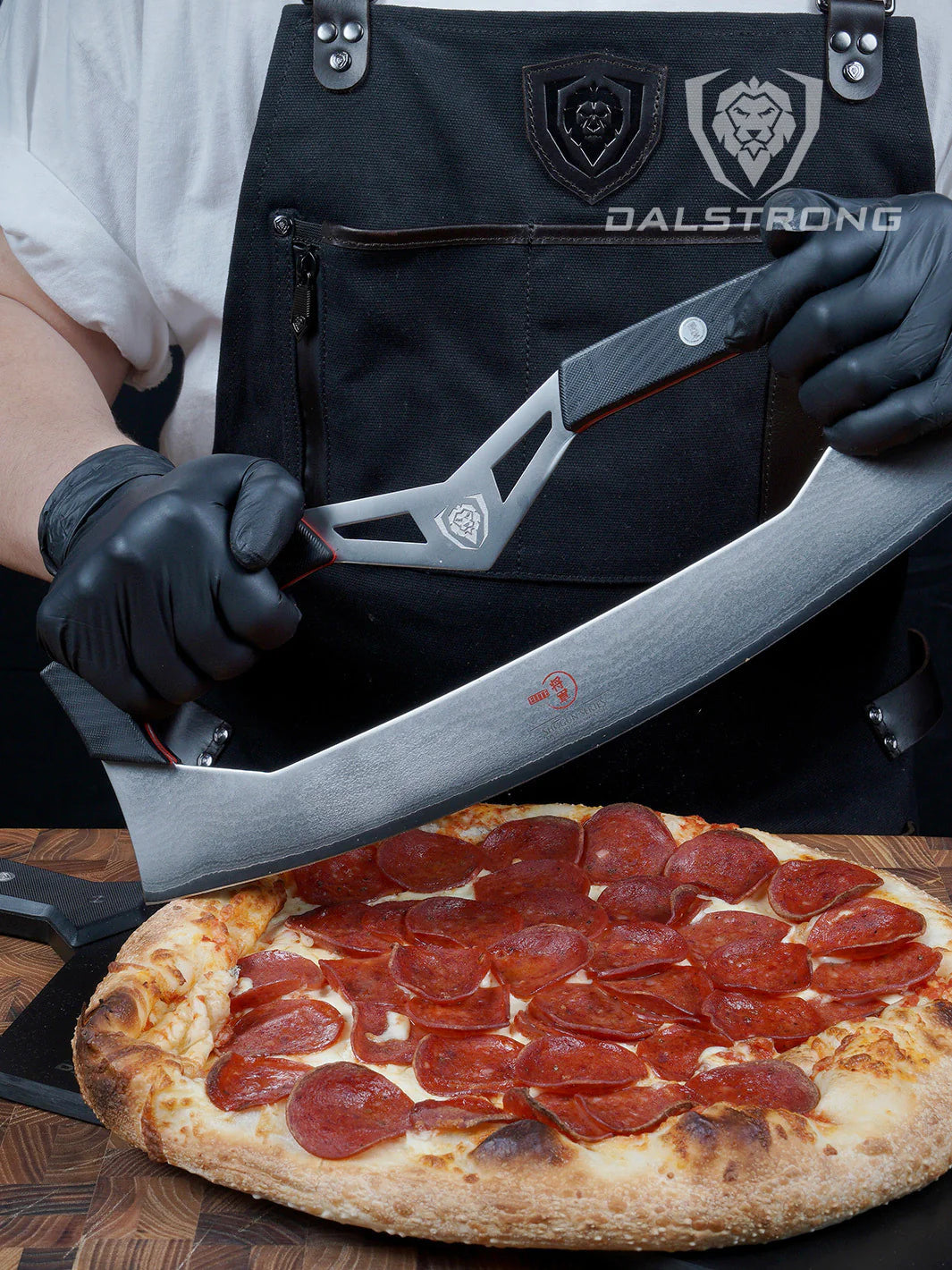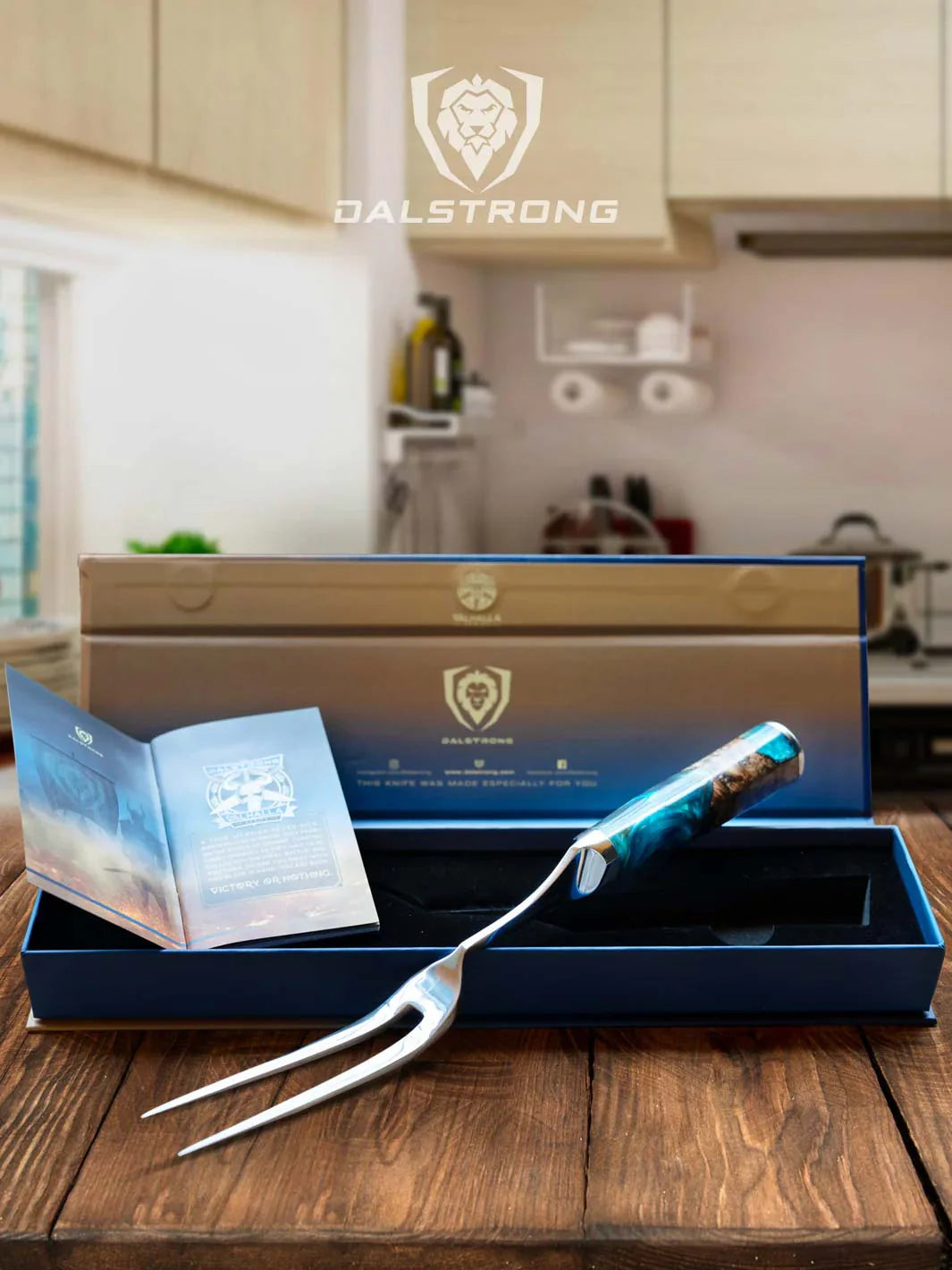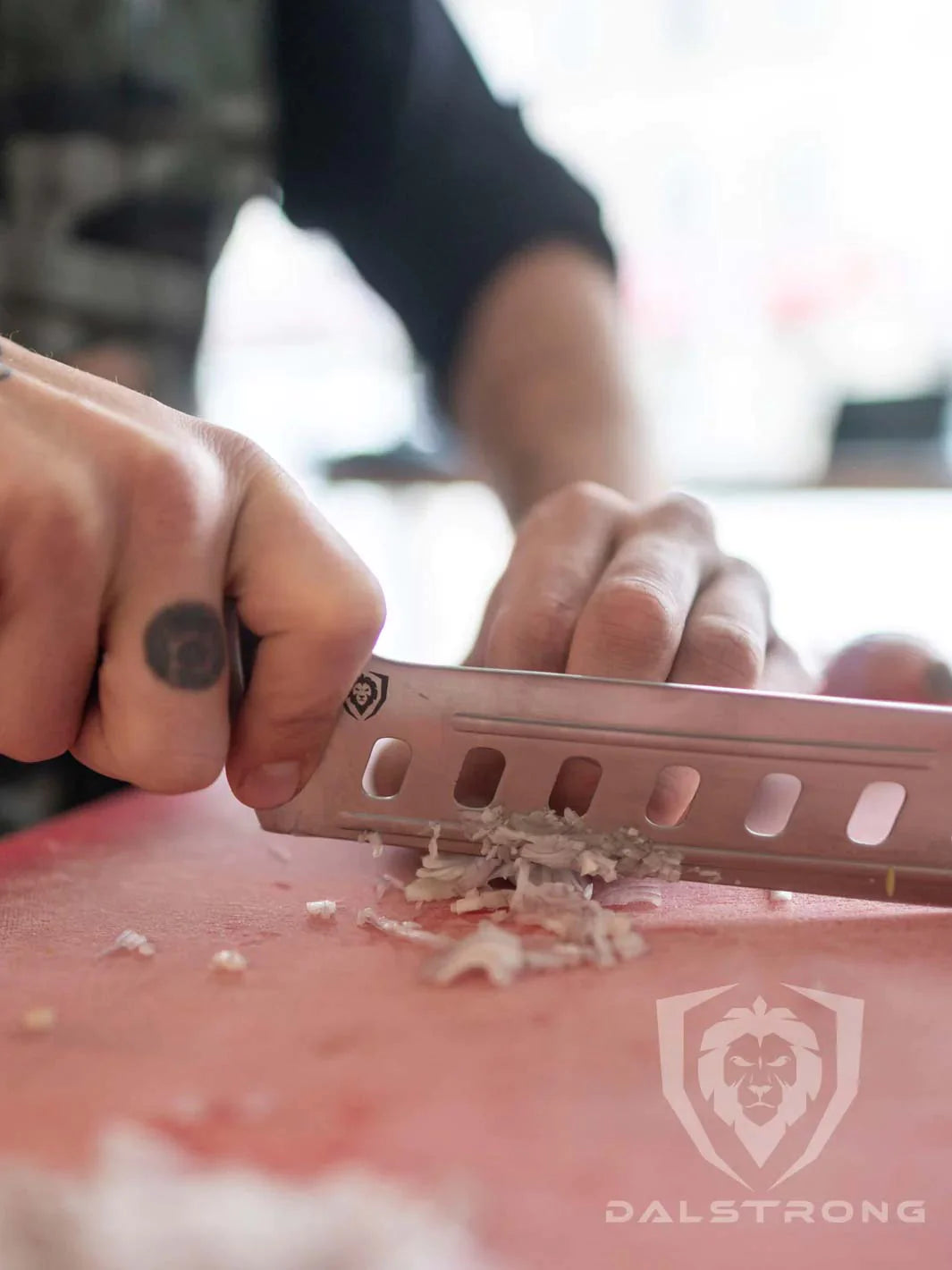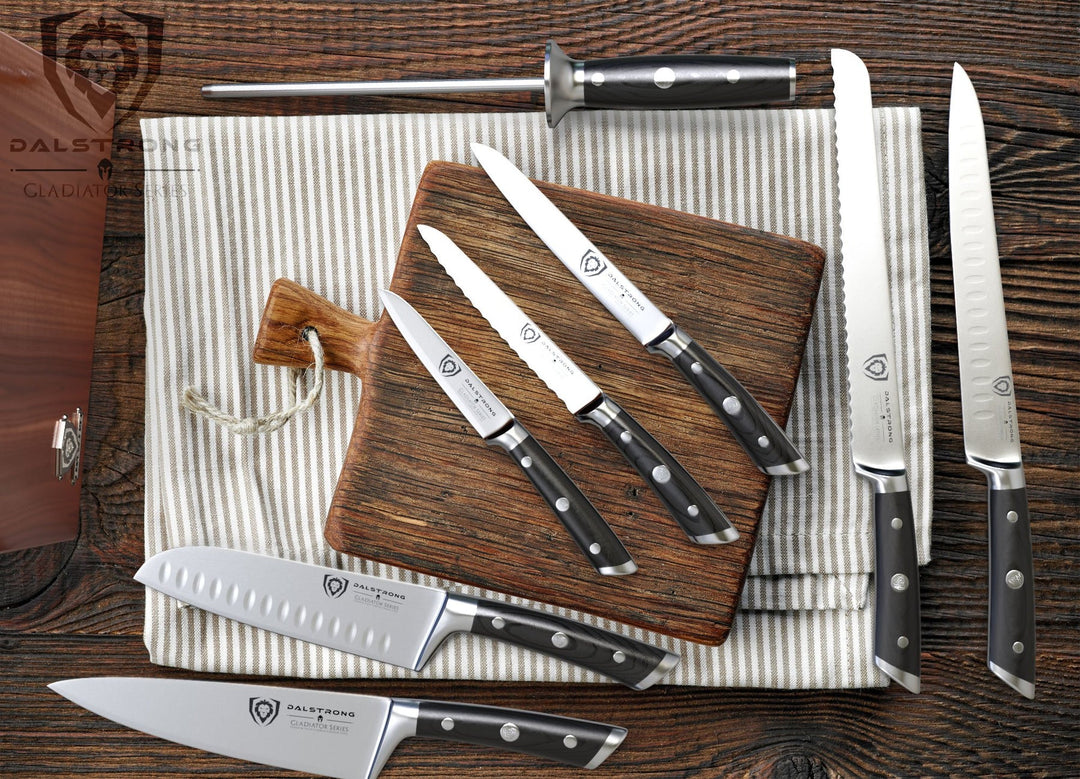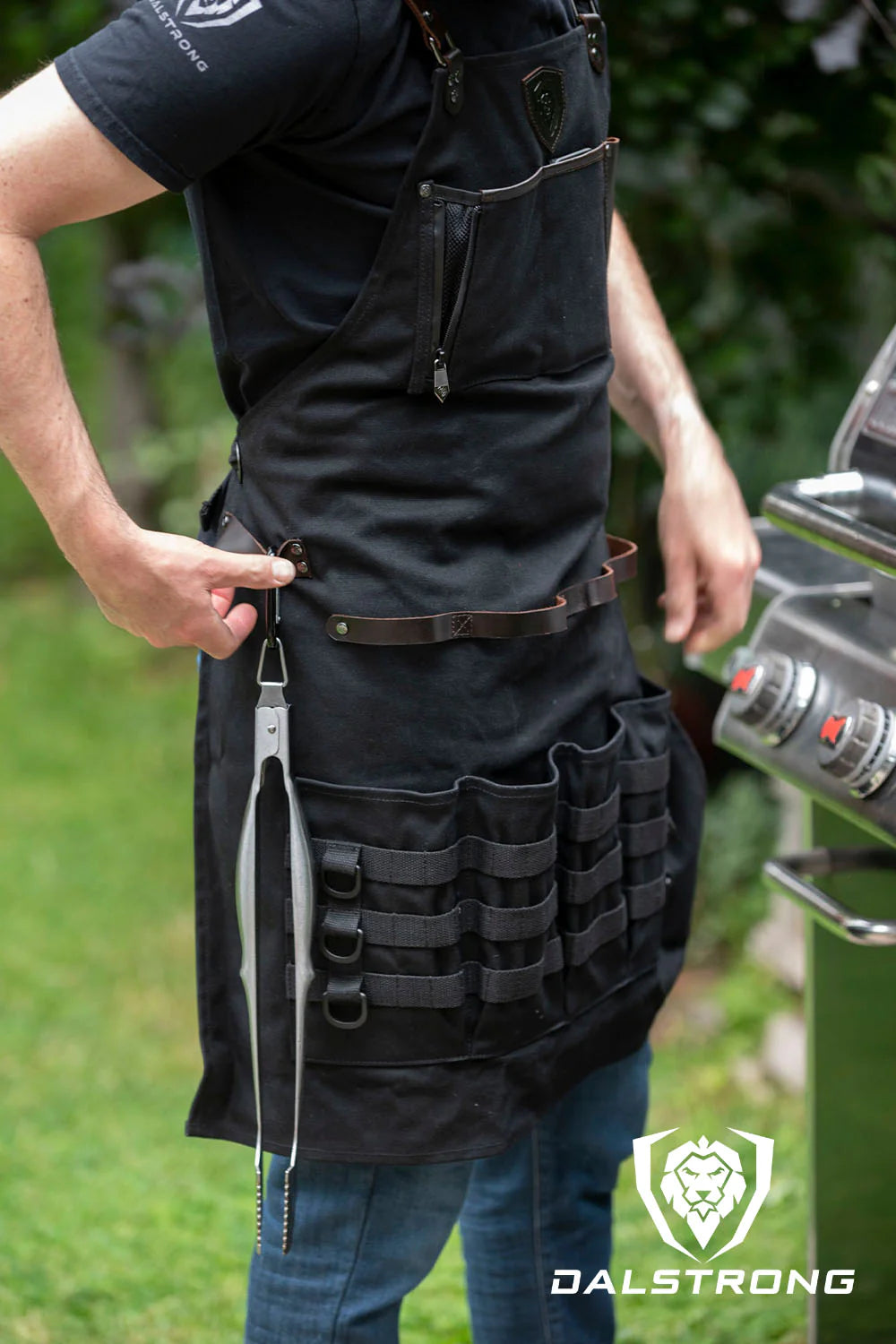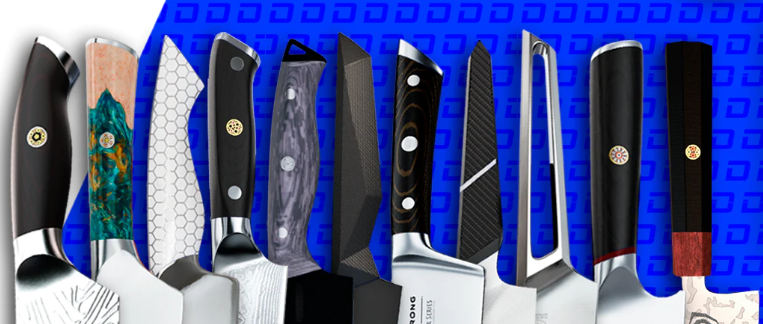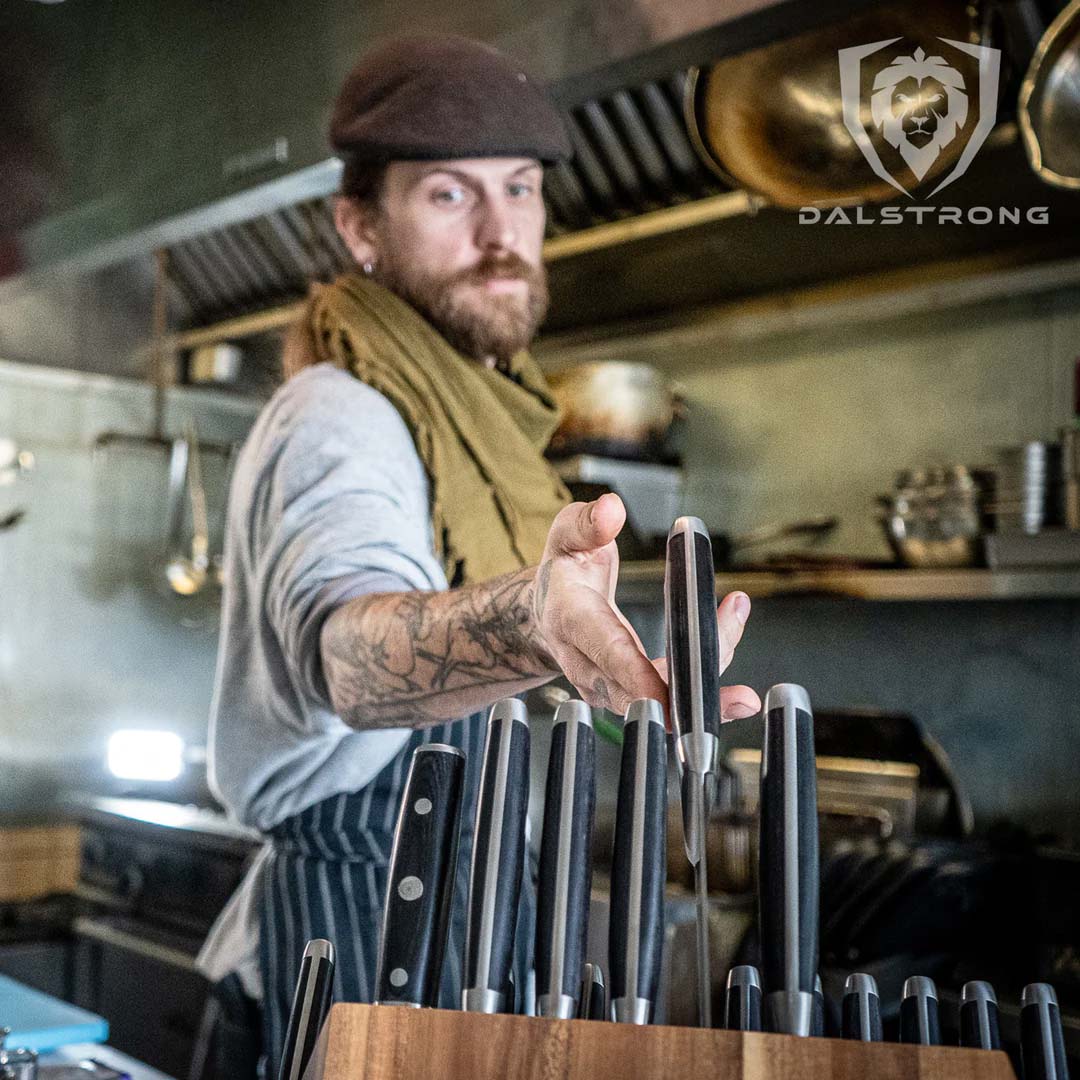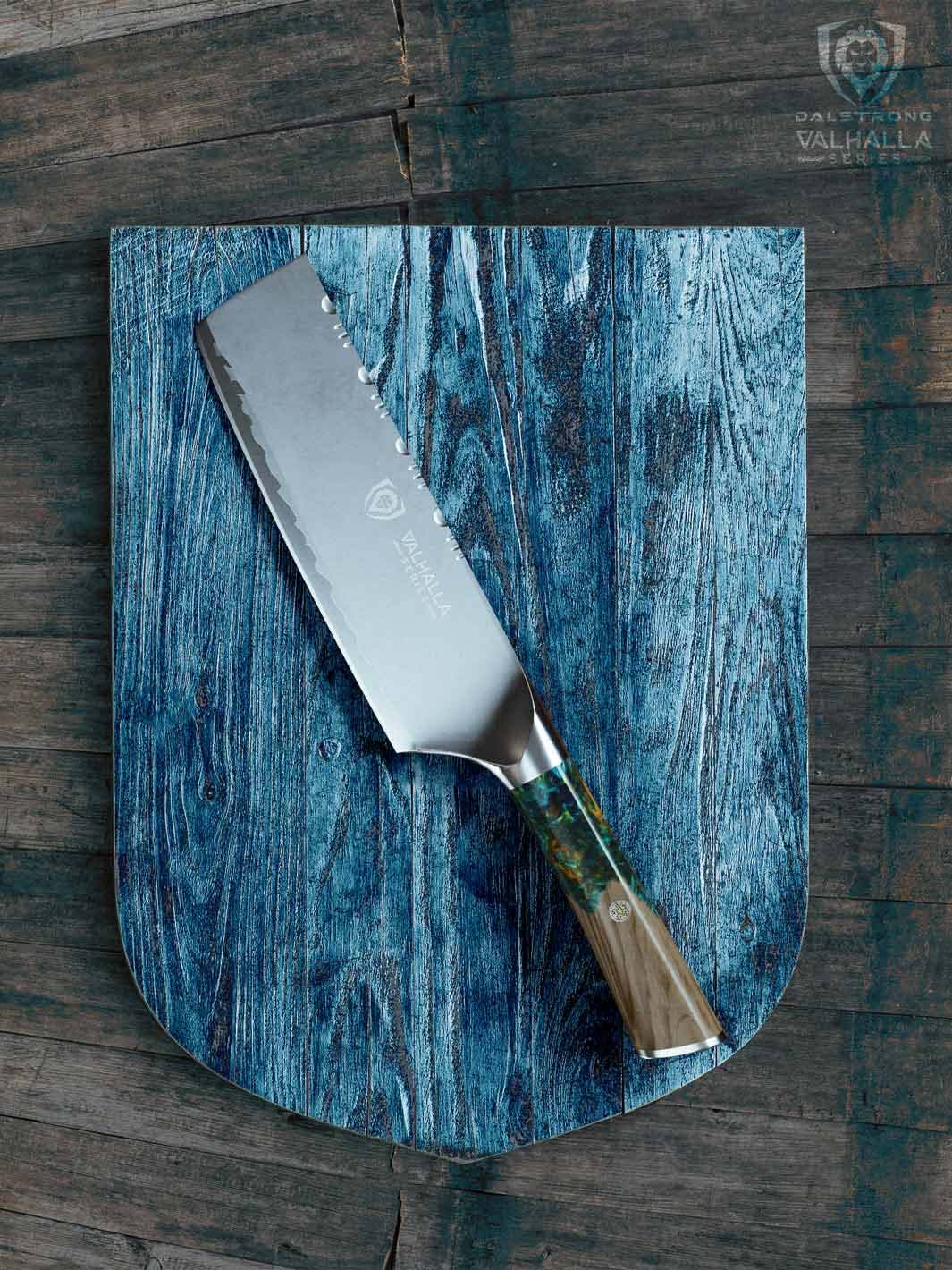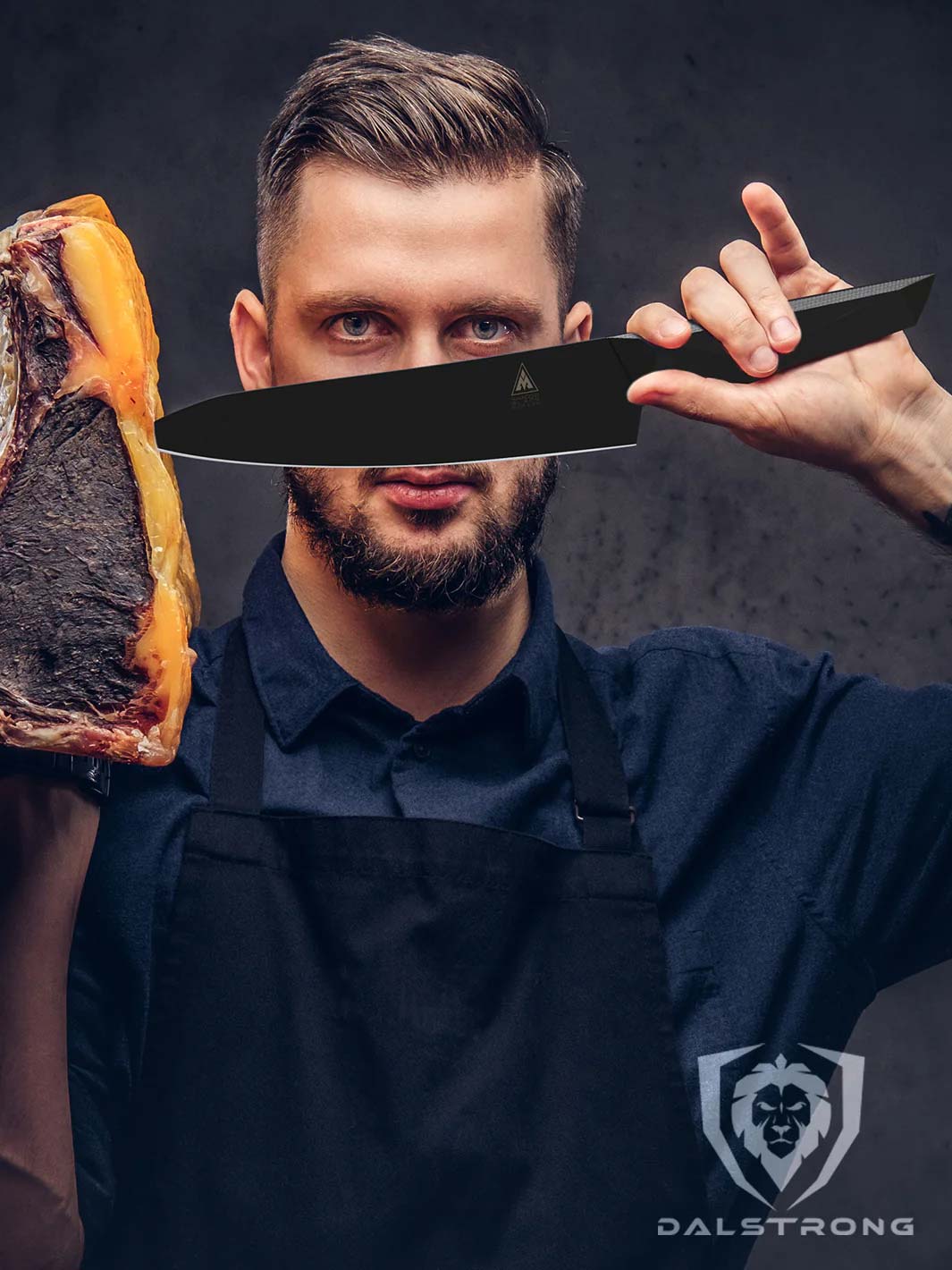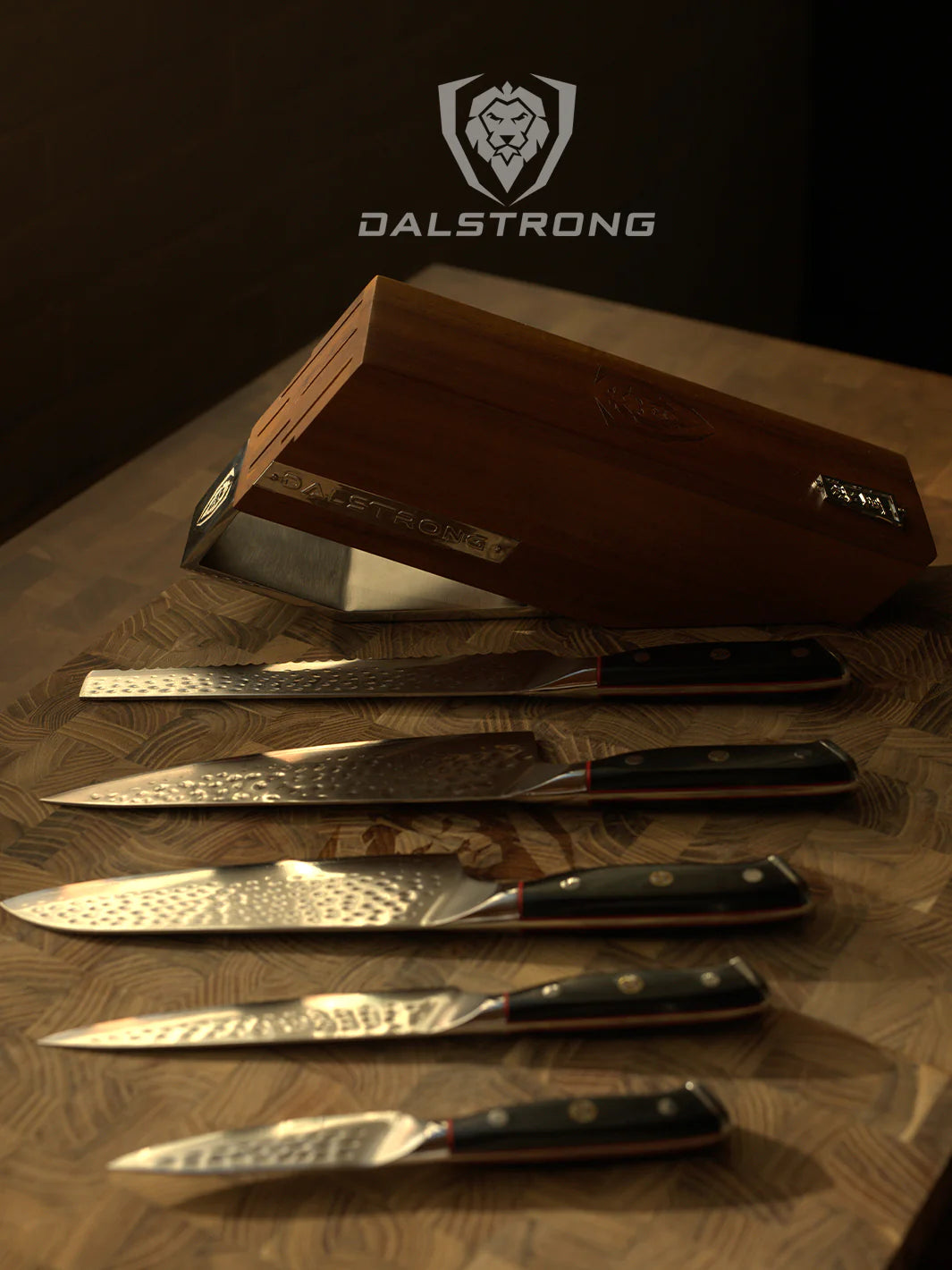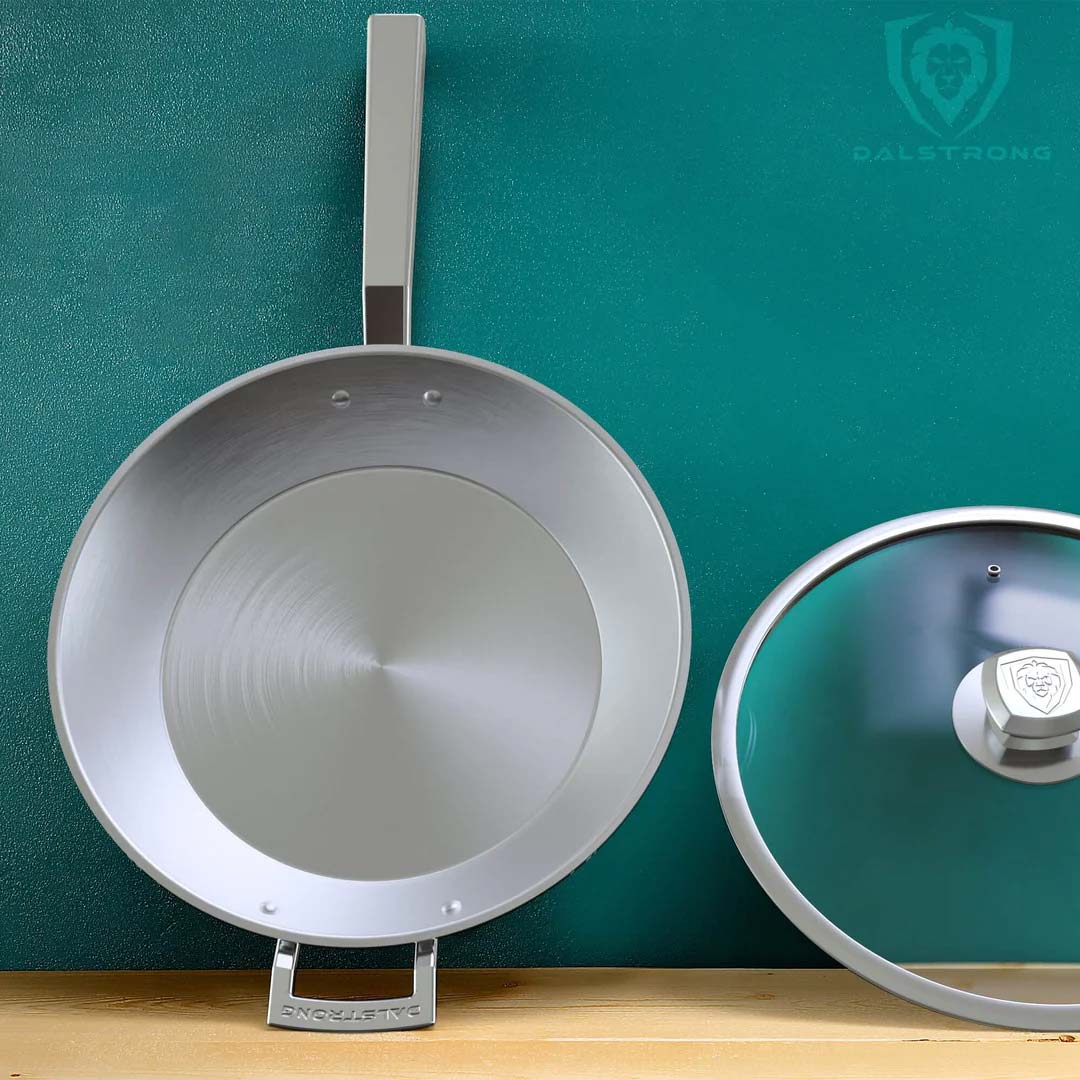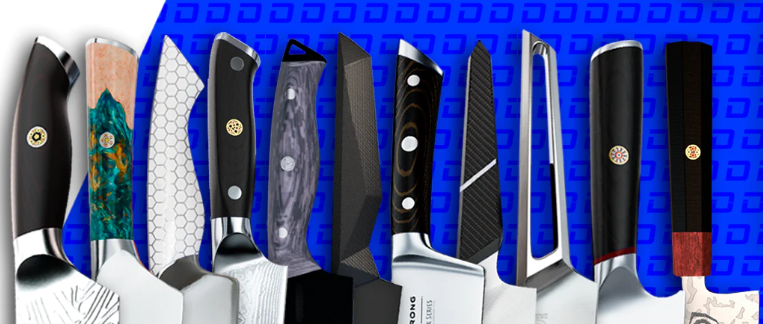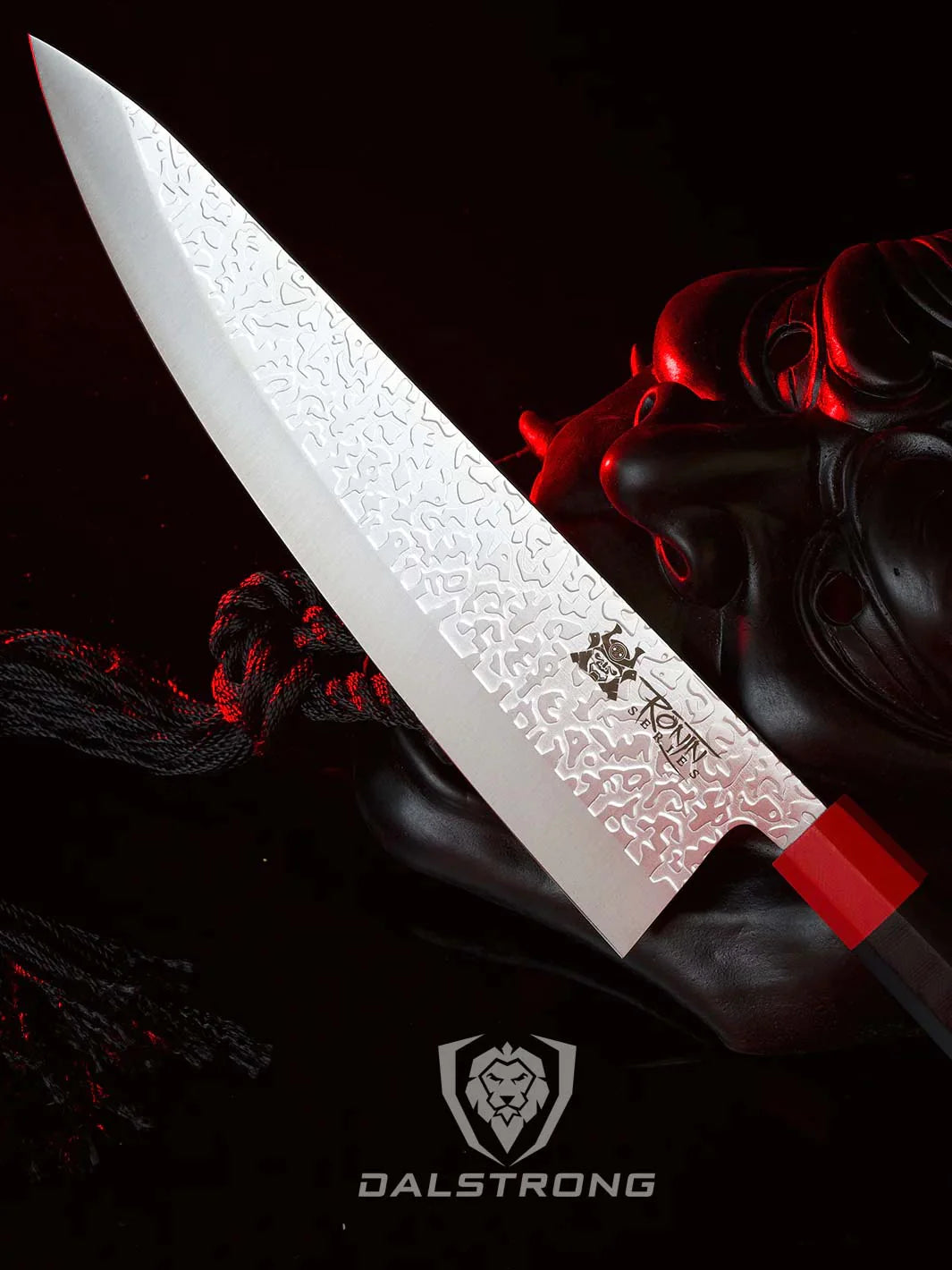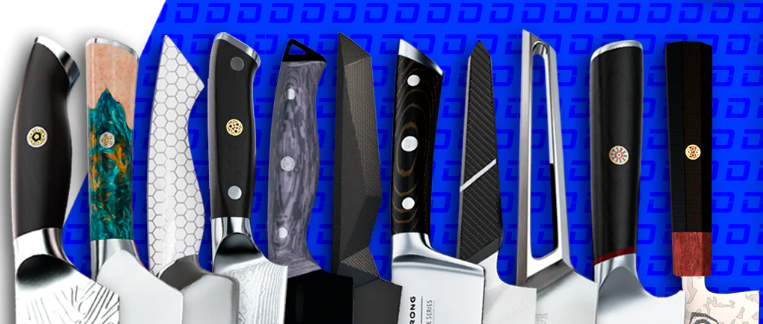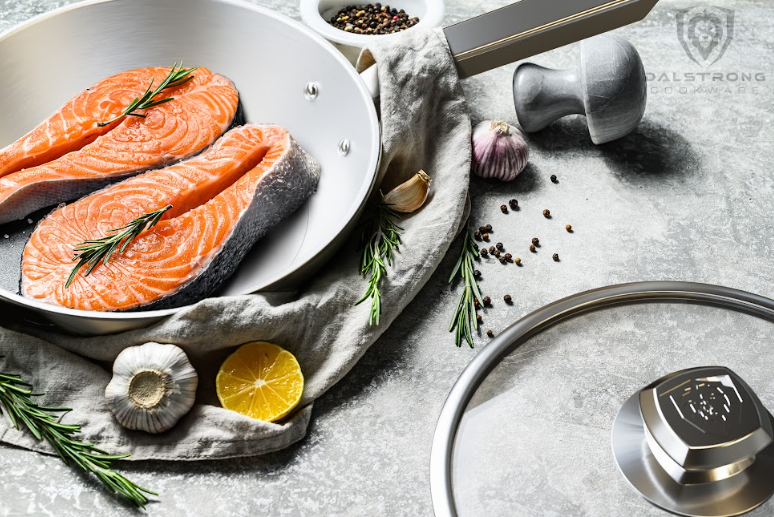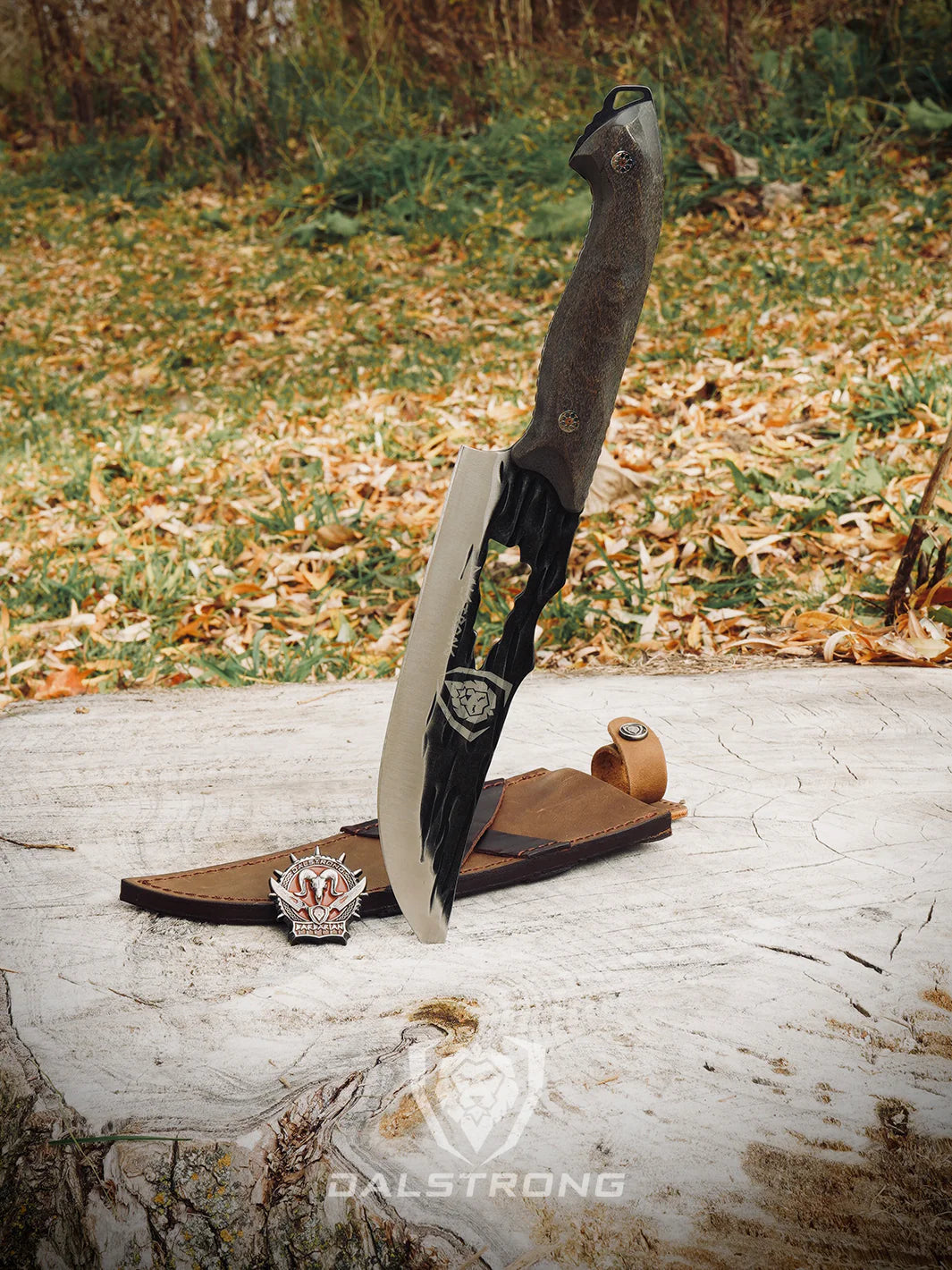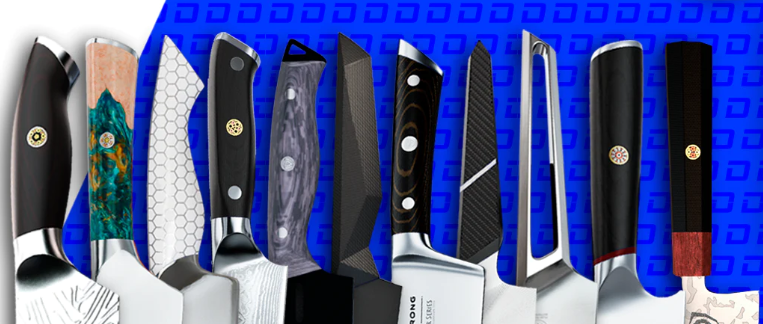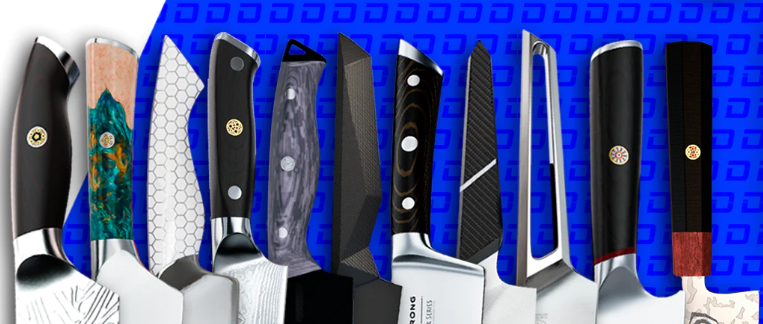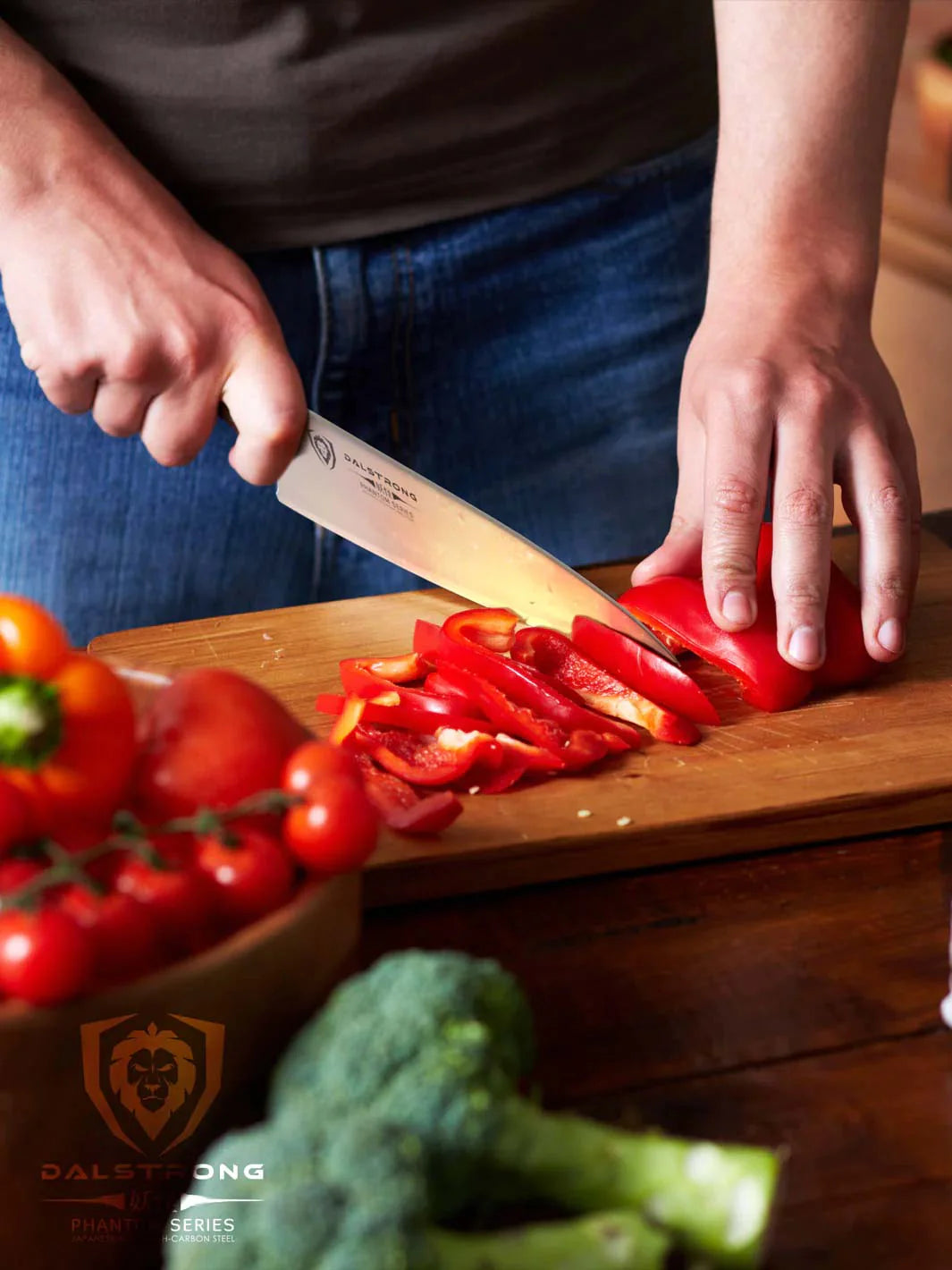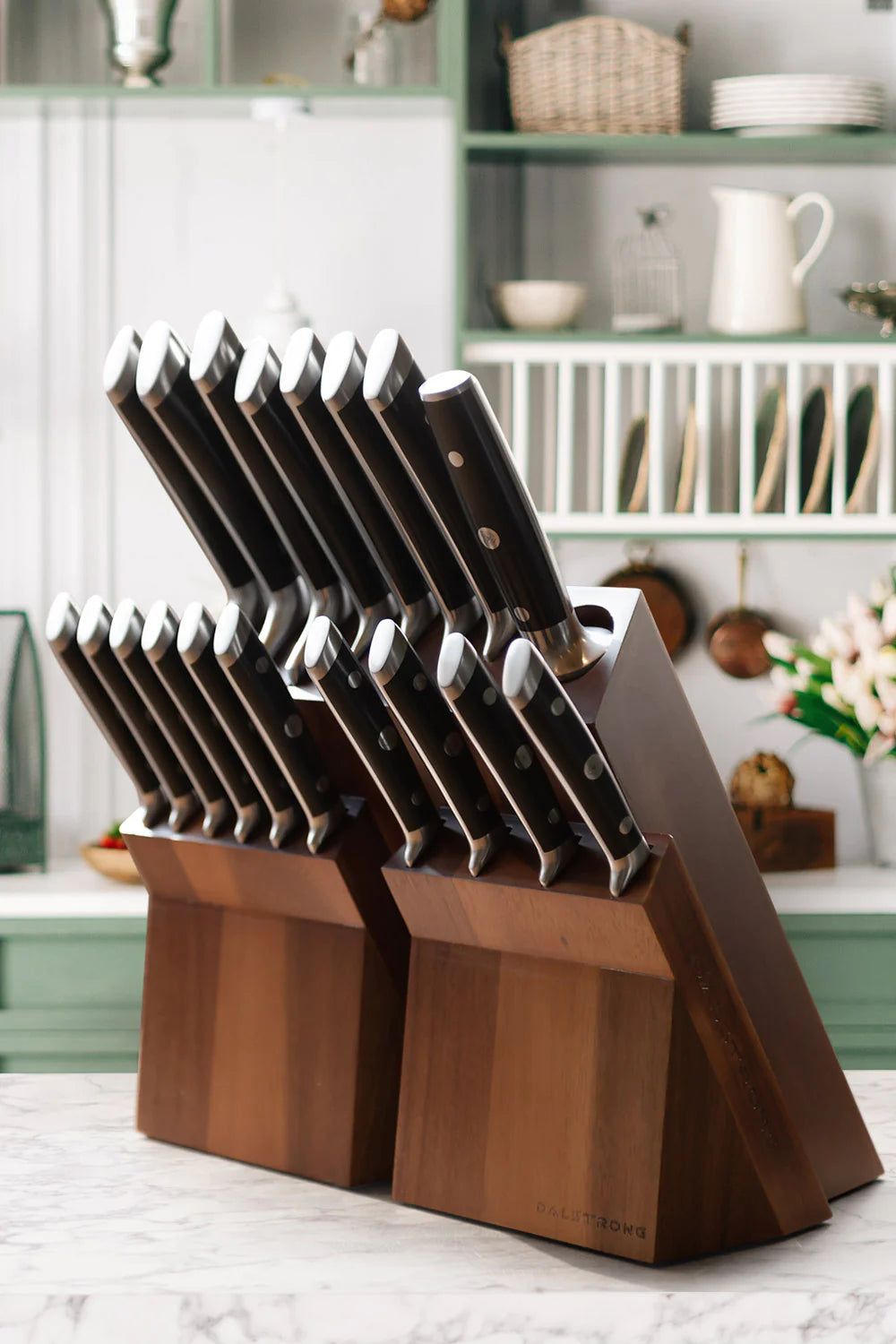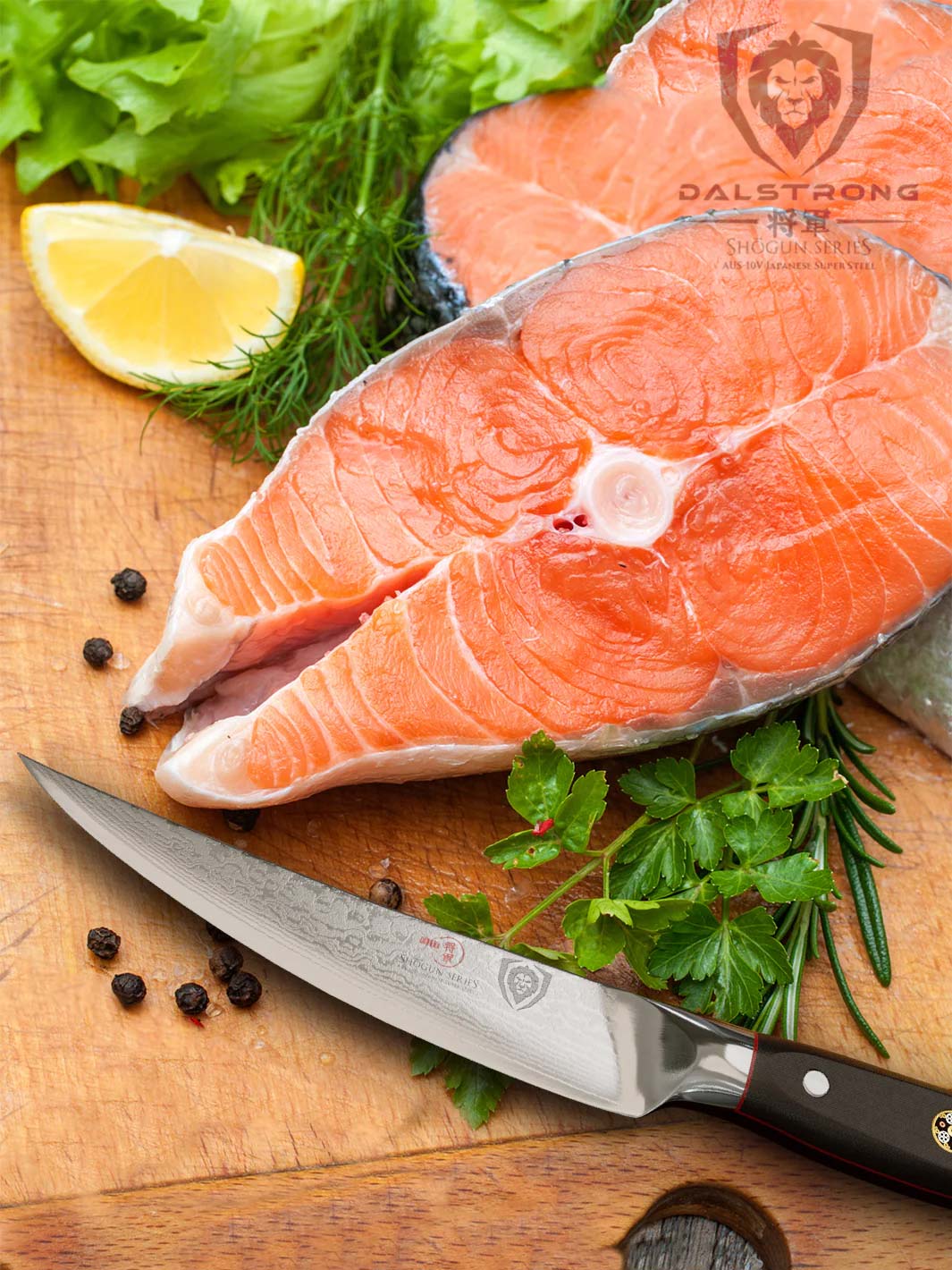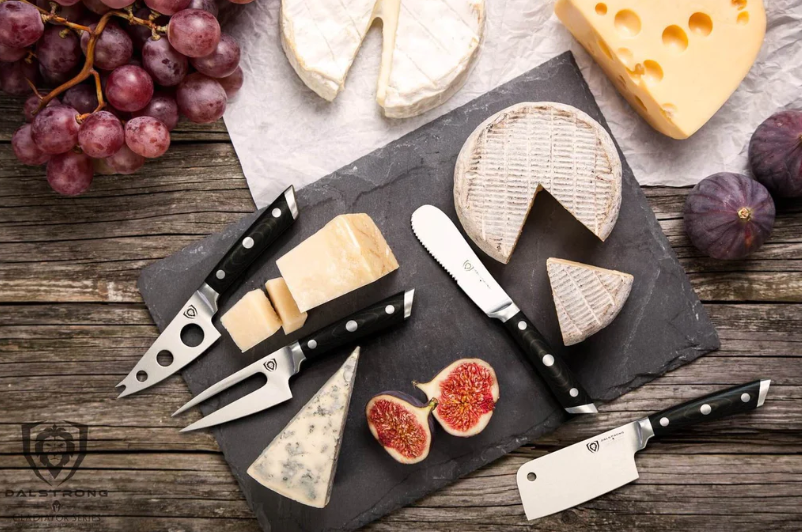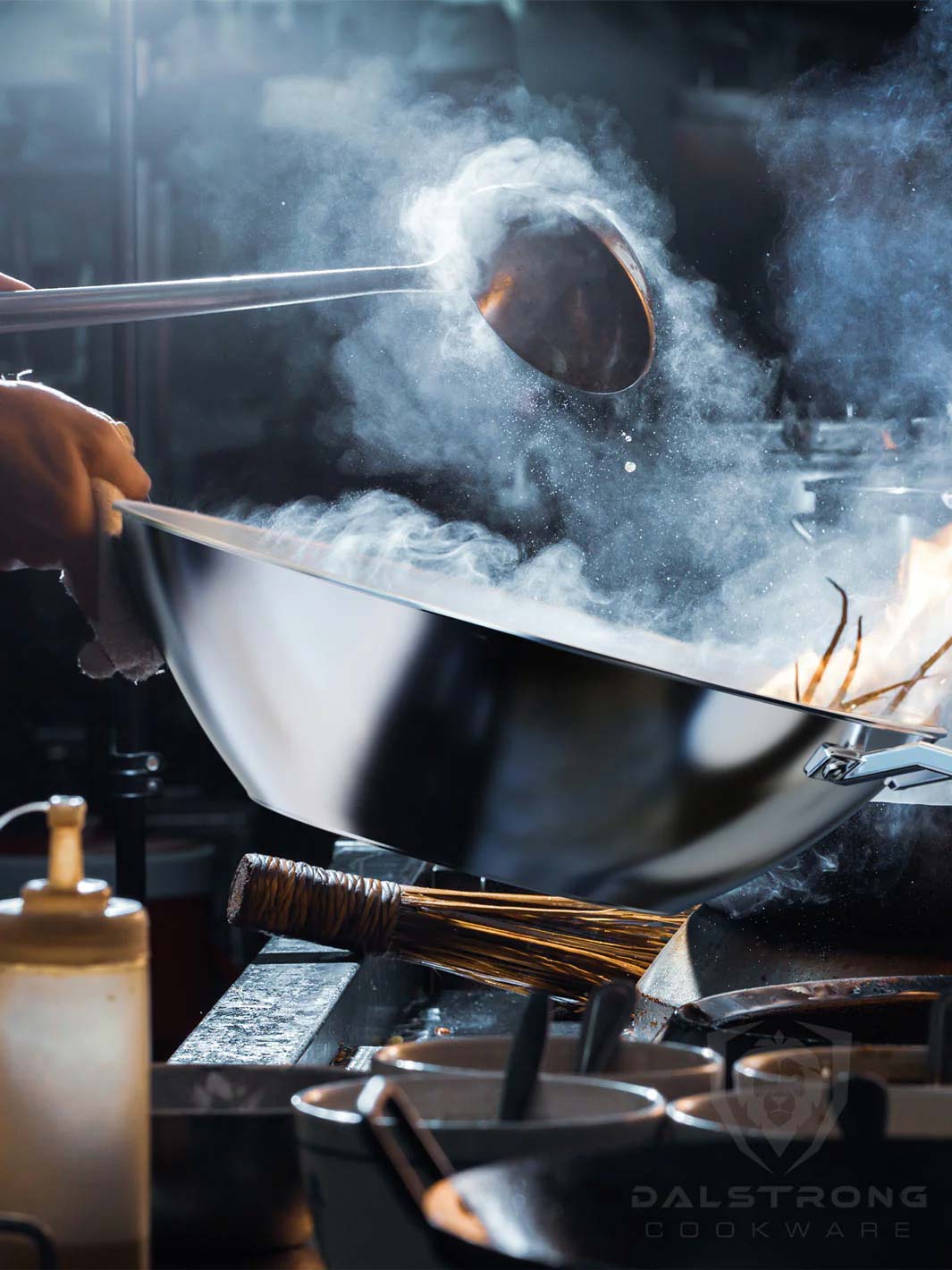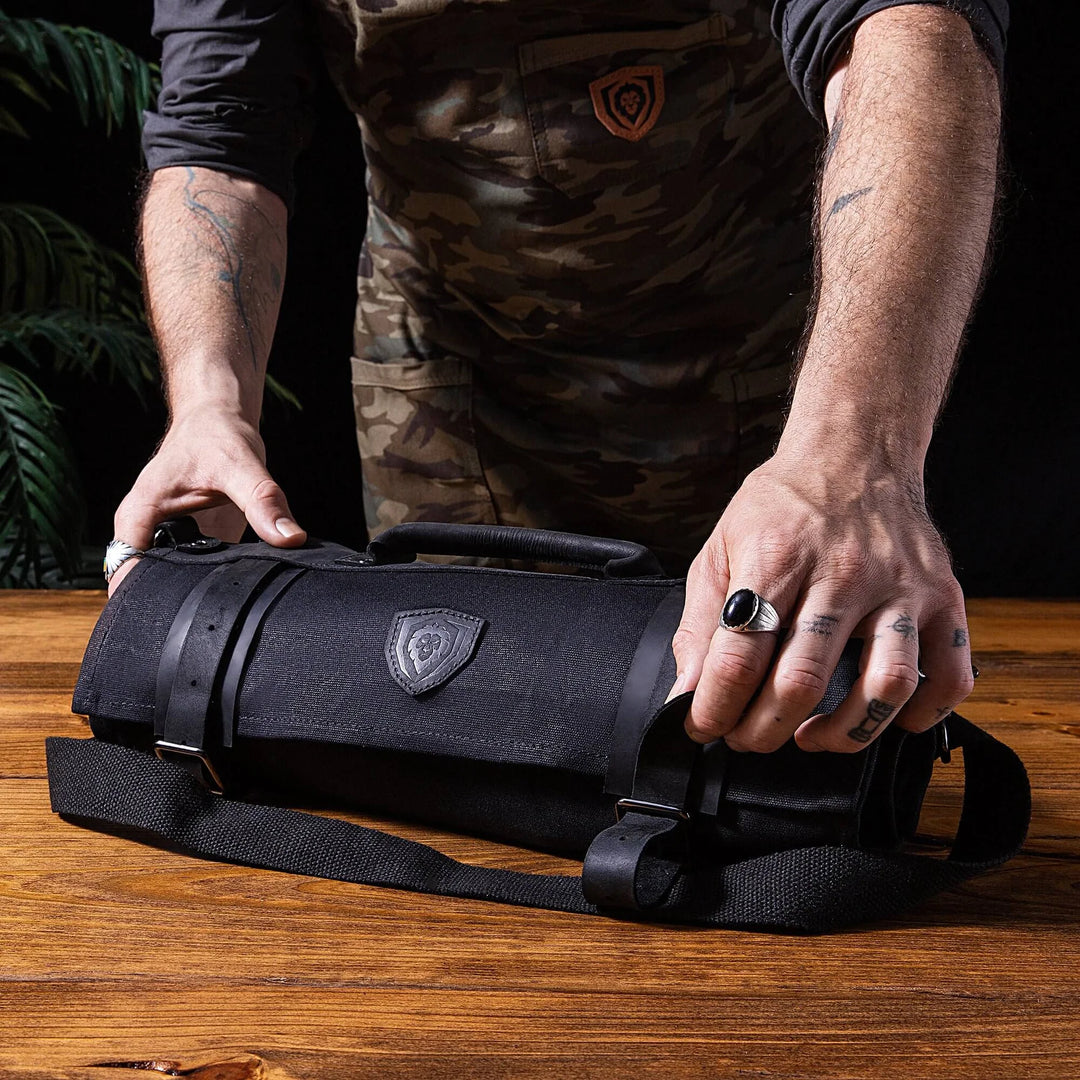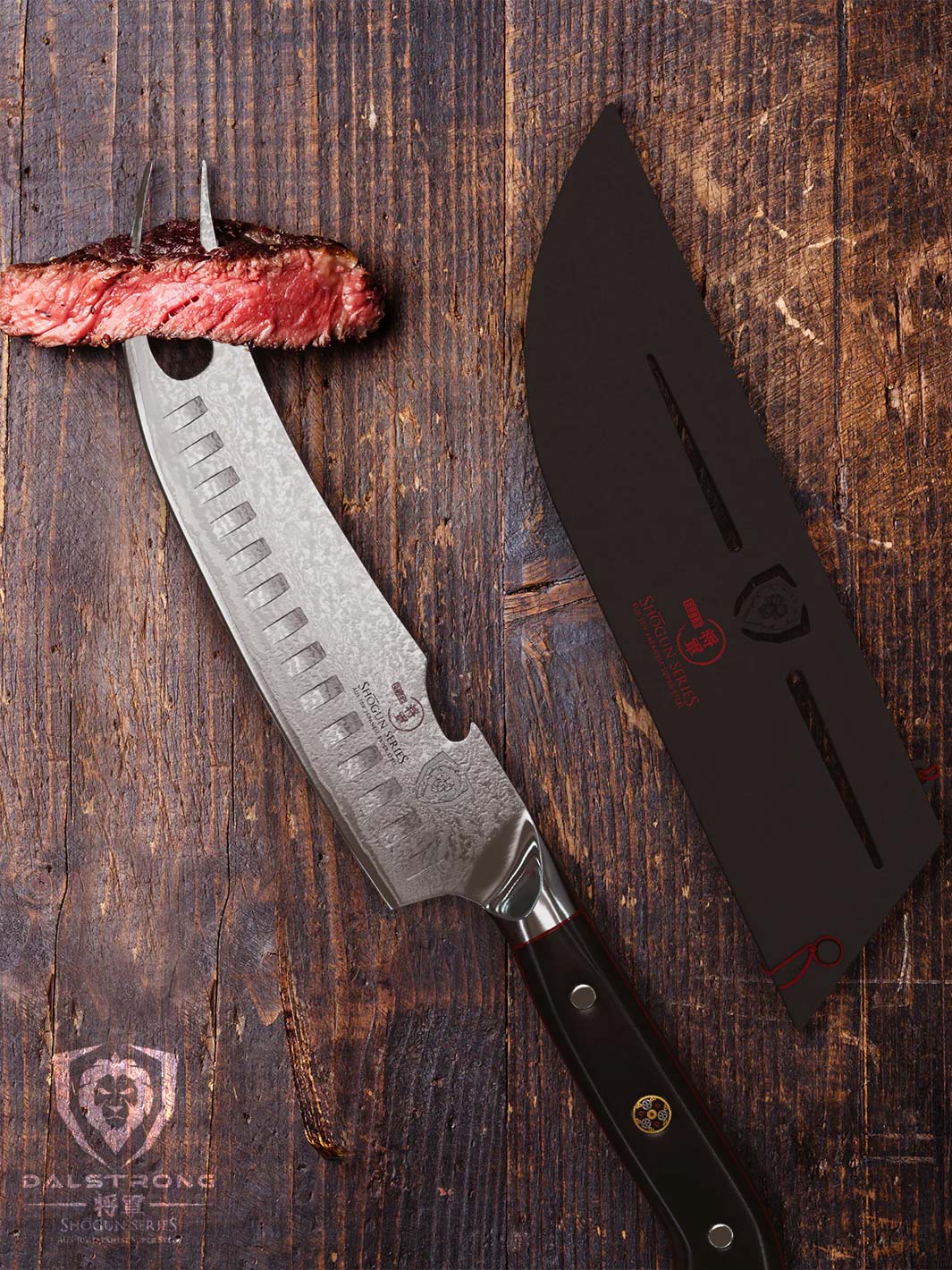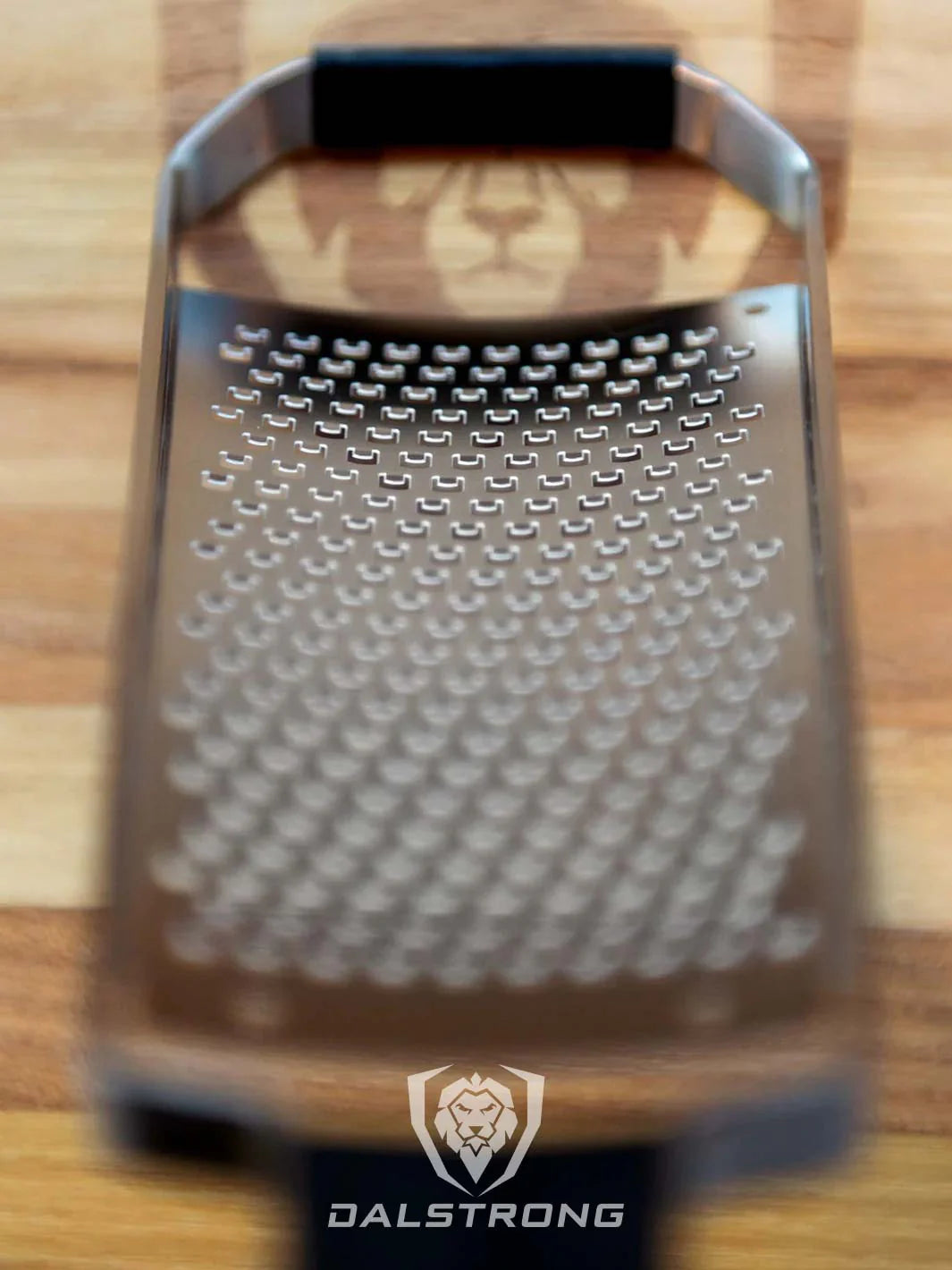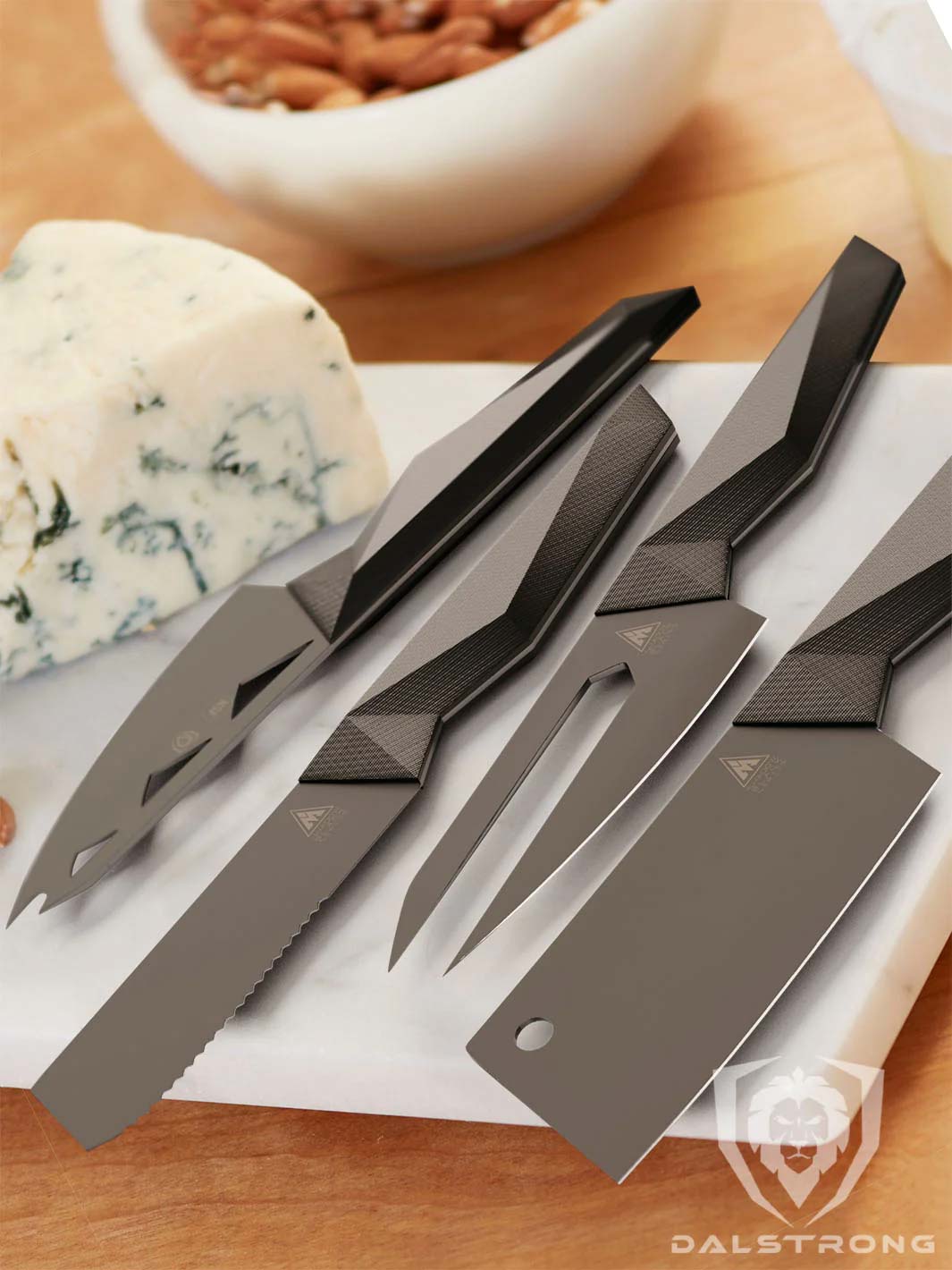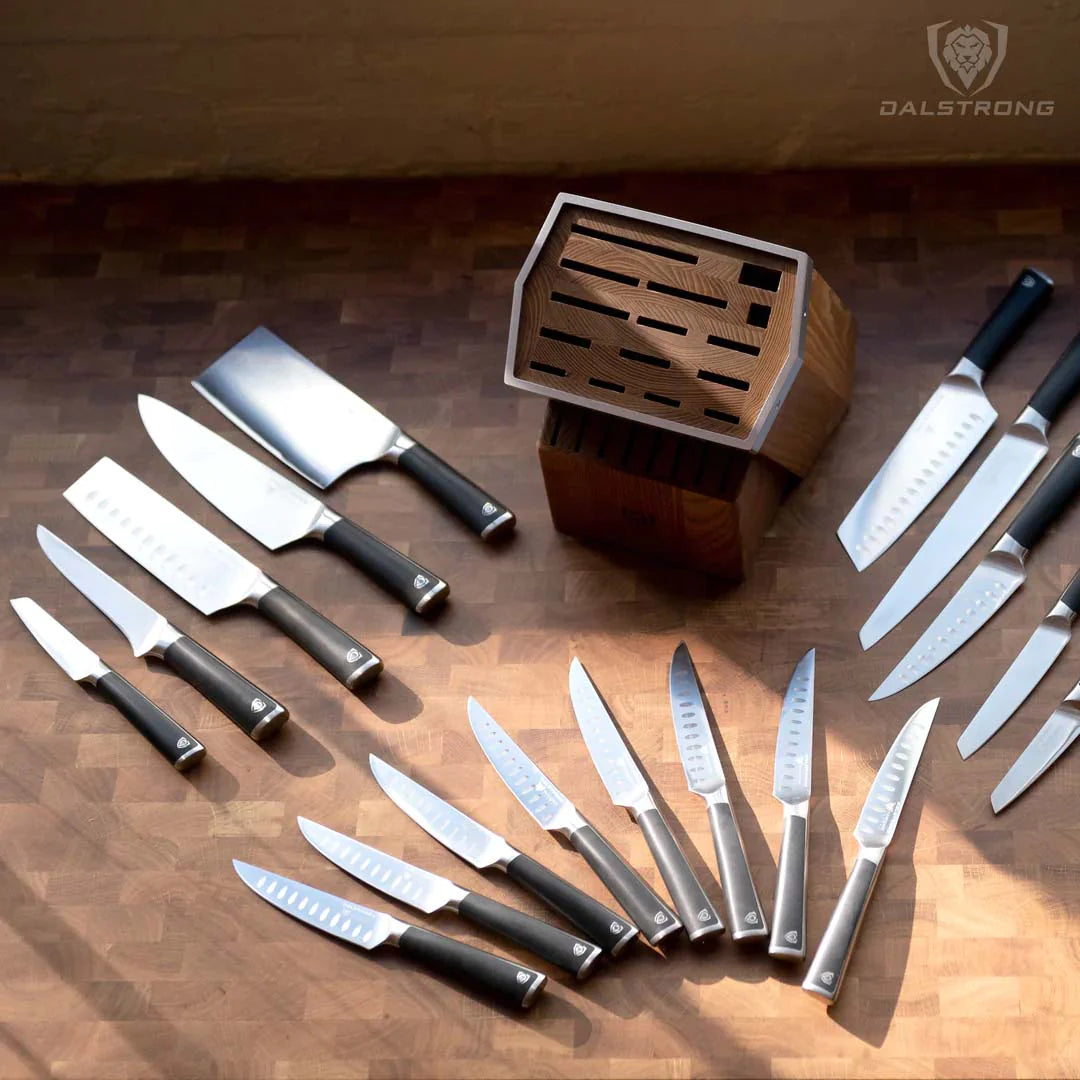What Are the Different Types of Japanese Knives?
Japanese knives include versatile types like Gyuto (chef's knife) and Santoku, specialized knives like Nakiri (vegetable knife) and Yanagiba (slicing knife), and heavy-duty options like Deba for fish and meat.
1. What Are The Types Of Japanese Knife And Their Uses
Ronin Series Yanagiba & Sushi Knife 10.5"
Japanese knives are a blend of art, tradition, and incredible functionality. Let's break down the different types of Japanese knives and how they can transform your cooking game.
Gyuto (Chef's Knife)
The Gyuto is the undisputed champion of Japanese knives. Akin to the Western chef's knife, this all-purpose knife is your go-to for just about anything. Whether you're slicing, dicing, or chopping, the Gyuto’s versatility makes it ideal for tackling a wide range of kitchen tasks. From slicing fish to dicing vegetables and everything in between. If you’re serious about cooking, you need a Gyuto in your arsenal. It's perfect for those precision cuts that make your dishes look as good as they taste.
Santoku (Multipurpose Knife)
The Santoku, whose name means "three virtues," is like the Gyuto’s elegant cousin. It excels in slicing, dicing, and mincing. With a shorter, straighter blade, the Santoku is perfect for those who appreciate precision. It's an all-purpose knife that brings a touch of finesse to your cooking. It's a multitasker to the core, capable of handling fish, meat, and vegetables with ease. The Santoku is ideal for home cooks who want to elevate their everyday meals with a knife that feels balanced and easy to control.
Deba (Butcher's Knife)
When it comes to heavy-duty tasks, the Deba is your go-to. This butcher's knife is designed for filleting fish and butchering meat. Deba knives feature thick, single bevel blades that can power through tough jobs without flinching. If you find yourself dealing with a lot of fish and meat, the Deba is an essential tool. It’s the kind of knife that makes you feel like you can tackle any butchery task with confidence. And trust me, there’s something incredibly satisfying about effortlessly slicing through a fish fillet with a well-made Deba knife.
Nakiri (Vegetable Knife)
Vegetable lovers, this one’s for you. The Nakiri is specifically designed for cutting vegetables. Its straight edge and thin blade allow for precision cuts without crushing your greens. The Nakiri vegetable knife is a game-changer for anyone who loves their veggies. Imagine making paper-thin slices of cucumber or perfectly diced carrots every single time. The Nakiri is perfect for the meticulous cook who values precision and consistency in their vegetable prep. Plus, it makes salad prep a breeze.
Usuba (Vegetable Knife)
The Usuba is the more traditional cousin of the Nakiri. Used by professional chefs, it’s designed for intricate vegetable work. Its single bevel edge provides cleaner, more precise cuts, making it perfect for delicate tasks like creating beautiful garnishes or thinly slicing daikon radishes. The Usuba is ideal for the vegetable knife enthusiast who appreciates the finer details of Japanese knife styles. It’s a bit more specialized, but if you’re into traditional Japanese cuisine or just love precision, the Usuba is a knife worth considering.
Petty (Utility Knife)
The Petty knife is like the trusty sidekick to your Gyuto. It’s perfect for smaller tasks like peeling, slicing fruits, and cutting herbs. This utility knife is the one you’ll reach for when you need something nimble and precise. It’s a handy addition to any knife sets, filling in where larger knives might be overkill. The Petty is small but mighty, proving that great things often come in small packages. Whether you’re making a quick fruit salad or finely chopping garlic, the Petty knife has got you covered.
Yanagiba (Slicing Knife)
Sushi enthusiasts, this one’s for you. The Yanagiba is the knife of choice for slicing fish into perfect sashimi pieces. Its long, thin blade ensures precision cuts, making it ideal for sushi chefs. If you’re serious about your sushi game, a Yanagiba is a must-have. This slicing knife is all about finesse and precision, allowing you to create beautifully uniform slices of fish that melt in your mouth. It’s the kind of knife that makes you feel like a seasoned sushi chef Netflix might shoot a documentary about, even if you’re just making dinner at home.
Sujihiki (Carving Knife)
The Sujihiki is similar to the Yanagiba but features a double bevel. This carving knife is perfect for slicing meat and fish, offering versatility in your kitchen arsenal. Whether you’re carving a roast or slicing through a tenderloin, the Sujihiki delivers clean, precise cuts every time. It’s a versatile addition to your collection, capable of handling a variety of tasks with ease. If you love hosting dinner parties or simply enjoy a perfectly carved piece of meat, the Sujihiki is a knife you’ll want to have on hand.
Each of these Japanese knives brings something unique to the table, catering to different culinary needs and preferences. From the all-purpose prowess of the Gyuto to the specialized finesse of the Usuba, there's a Japanese knife for every cook and every task.
2. Key Features Of A Japanese Knife
Ronin Series Yanagiba & Sushi Knife 10.5"
Now let’s delve into what makes these knives so special. It’s not just about the blade itself but also the materials, design, and craftsmanship that go into each knife. Understanding these features will help you appreciate the artistry behind every cut.
Blade Materials
When it comes to Japanese knives, the blade material is a big deal. The choice of material impacts everything from sharpness to maintenance and overall performance. Let’s break down the most common materials you’ll encounter.
Carbon Steel
Carbon steel is prized for its razor-sharp edge and ease of sharpening. This type of Japanese knife is a favorite among professional chefs and knife enthusiasts. However, it requires regular maintenance to prevent rust and staining. If you’re willing to put in the effort, a carbon steel blade will reward you with unmatched sharpness and precision.
Stainless Steel
Stainless steel is the go-to for those who prefer low-maintenance kitchen knives. While it might not hold an edge as long as carbon steel, it’s resistant to rust and easy to care for. This makes it ideal for home cooks who want a reliable blade without the fuss.
Damascus Steel
Known for its distinctive wavy patterns, Damascus steel is not just about looks. It combines the best of both worlds: the sharpness of carbon steel and the durability of stainless steel. Plus, it’s a conversation starter. Who wouldn’t want to show off a beautifully patterned blade at their next dinner party?
Blade Shape
The blade shape is more than just aesthetics; it’s about functionality. Japanese knives come in various shapes, each designed for specific tasks. Let’s explore some of these shapes.
Straight Blades
Knives like the Nakiri and Usuba vegetable knives have straight blades. This shape is perfect for chopping vegetables, allowing for clean, precise cuts. If you’re all about that veggie life, straight blades are your best friends.
Curved Blades
Blades with a slight curve, like the Gyuto chef’s knife, offer versatility. They’re great for rocking motions, making them ideal for slicing and dicing. The curved blade shape allows for a smooth, continuous cutting motion, reducing fatigue during long prep sessions.
Thick Blades
Deba knives and cleaver knives boast thick blades designed for heavy-duty tasks like butchering meat and fish. These robust blades can handle the pressure, making them essential for any serious cook dealing with larger cuts.
Thin Blades
On the flip side, knives with thin blades, like the Yanagiba and Sujihiki, are perfect for precision tasks. They’re ideal for slicing fish and meat into delicate, uniform pieces. Thin blades reduce drag, ensuring clean, beautiful cuts every time.
Handle Materials
Handles are where tradition meets comfort. The material and design of the handle can significantly affect how a knife feels in your hand.
Magnolia Wood
Traditional Japanese knives often feature handles made from magnolia wood. This material is lightweight and provides excellent grip, even when wet. It’s a classic choice that complements the blade’s precision.
Other Hardwoods
Other hardwoods are also popular among knife makers for their durability and aesthetic appeal. These handles are often polished to a smooth finish, providing a comfortable and secure grip.
Modern Materials
Some modern Japanese knives feature handles made from synthetic materials or composites. These handles offer the benefits of durability and resistance to moisture and temperature changes. They’re a practical choice for those who want a low-maintenance kitchen knife.
Understanding the key features of Japanese knives -- from blade materials and shapes to handle designs -- gives you a deeper appreciation for these exceptional tools. Whether you’re drawn to the sharpness of carbon steel, the beauty of Damascus steel, or the traditional craftsmanship of magnolia wood handles, there’s a Japanese knife out there that’s perfect for you. So, next time you’re slicing through your ingredients, take a moment to appreciate the artistry and precision that went into creating your trusty kitchen companion.
By considering these key features, you’ll be well on your way to selecting the perfect Japanese knife for your needs. Whether it’s for corporate gifting or enhancing your personal collection, understanding these nuances will help you make an informed choice. Now, let's move on to choosing the right knife for you.
3. How To Choose The Right Japanese Knife For You
Gladiator Series Kiritsuke Chef's Knife 8.5"
Choosing the perfect Japanese knife can feel like picking the right superhero for a mission. Each has its own superpowers, and knowing which one aligns with your kitchen needs is the key to culinary success. Here’s a friendly, relaxed guide to help you navigate the world of Japanese knife types and find your perfect match.
Consider Your Needs
First things first, think about what you love to cook. Your cooking style and the types of food you prepare will largely dictate which Japanese knife is best for you.
For the Veggie Enthusiast
If you find joy in preparing vegetables, the Nakiri knife or Usuba vegetable knife will be your best allies. The Nakiri, with its straight edge, is perfect for chopping, dicing, and slicing vegetables without crushing them. The Usuba offers a single bevel edge, providing even more precision for intricate vegetable work. Both knives make your greens look gorgeous and your prep work feel like a breeze.
For the Meat and Fish Lover
Do you often find yourself filleting fish or carving meat? Then the Deba and Yanagiba knives are your top picks. Deba knives, with their robust, thick blades, excel at butchering and filleting. The Yanagiba, on the other hand, is ideal for slicing fish into thin, beautiful sashimi pieces. If your kitchen often sees fish and meat, these knives will elevate your cutting experience.
For All-Around Use
Looking for a versatile knife that can handle a variety of tasks? The Gyuto chef’s knife and Santoku knife are your go-to choices. The Gyuto is the Japanese equivalent of the Western chef knife, capable of handling meat, fish, and vegetables with equal ease. The Santoku, meaning "three virtues," is excellent for slicing, dicing, and mincing. Both are perfect for home cooks who need a reliable, multipurpose knife in their arsenal.
Specialized Needs
For specific tasks like slicing bread or carving roasts, having a specialized knife can make all the difference. A bread knife with its serrated edge cuts through crusty loaves without squashing the soft interior. A carving knife, with its long, thin blade, is perfect for slicing roast meats with precision.
Test the Weight and Balance
Once you have an idea of the type of Japanese knife you need, the next step is to test the weight and balance. A knife should feel like an extension of your hand, not a burden. Here’s how to find that perfect fit:
Grip the Handle
Hold the knife by its handle and see how it feels in your hand. It should be comfortable and secure.
Balance Point
Place your finger under the knife at the point where the blade meets the handle. The knife should balance evenly, indicating good weight distribution.
Weight Preference
Some people prefer heavier knives for their momentum, while others like lighter knives for their agility. Test a few to see what suits you best.
Choosing the right Japanese knife is about finding the perfect balance between your cooking needs, personal preferences, and maintenance willingness. Whether you’re drawn to the precision of a Nakiri, the versatility of a Gyuto, or the beauty of Damascus steel, there’s a Japanese knife out there waiting to become your trusty kitchen companion. So, grab a cutting board, test a few knives, and get ready to elevate your cooking game!
4. How To Store Your Japanese Knife
Proper storage is crucial not only for maintaining their sharpness but also for ensuring your safety. Let’s explore the best ways to store your Japanese knives.
Knife Sheaths and Bags
Knife sheaths are a fantastic option for protecting the blade when it's not in use. Made from materials like plastic, leather, or wood, sheaths prevent the blade from getting nicked or dull. Plus, they protect you from accidentally cutting yourself when rummaging through drawers. For Japanese kitchen knives, wooden handles often come paired with matching wooden sheaths, adding a touch of traditional Japanese elegance to your kitchen setup.
If you’re someone who likes to cook on the go -- whether it’s for catering gigs, cooking classes, or just showing off at your friend’s BBQ -- knife bags are perfect. They offer a safe, organized way to transport your knives. These bags usually have individual slots for each knife, ensuring they don’t clink against each other, preserving their sharpness. For the home cooks who travel or the chefs on the move, knife bags are a practical investment.
Magnetic Strips
Magnetic strips are mounted on your kitchen wall, keeping your knives within easy reach while you’re cooking. This storage method prevents the blades from dulling since they don’t touch anything but the strip. Plus, let’s face it, a row of gleaming Japanese knives lined up on a magnetic strip looks pretty impressive. Whether you’re showcasing a stunning Damascus steel blade or a sleek Santoku multipurpose knife, magnetic strips add a modern touch to your kitchen.
Traditional knife blocks are a tried-and-true method of knife storage. They’re convenient and keep your knives in one place, but there are a few things to keep in mind to avoid damaging your precious blades.
Knife blocks can harbor moisture and food particles, which isn’t great for blade maintenance. Make sure your knives are completely dry before inserting them into the block. Periodically clean the block itself to prevent buildup of any debris. Some knife blocks come with vertical slots that allow for better air circulation, helping to keep the blades dry and sharp.
Extra Tips for Knife Storage
Avoid the Drawer
Storing knives loose in a drawer is a big no-no. The blades can easily get damaged, and you’re at risk of cutting yourself when reaching in. If drawer storage is your only option, invest in blade guards or sheaths to keep each knife protected.
Use Sharpening Stones Regularly
No matter how well you store your knives, they will eventually need sharpening. Using sharpening stones regularly keeps your blades in top condition. Proper knife maintenance includes routine sharpening to maintain that razor-sharp edge, especially for high-quality blade materials like carbon steel or Damascus steel.
Read about How to Sharpen a Knife With a Whetstone, here.
Handle with Care
When storing your knives, handle them by the spine rather than the edge to prevent dulling. This is especially important for knives with delicate, thin blades like Japanese kitchen knives and santoku knives.
5. Dalstrong Japanese Knives You Should Try
1. Shogun Series ELITE | Kiritsuke Chef's Knife 8.5"
If you’re into cooking and want to feel like a total pro in the kitchen, check out the this amazing Kiritsuke knife. It's a fusion of the Japanese yanagiba (for fish) and usuba (for veggies), but with a double-bevel edge that makes it way easier to handle. Plus, the G-10 Garolite handle is super comfy and durable. It even comes with a sleek sheath to keep it protected.
PROS:
- Double-bevel edge is easy to use and maintain, even if you’re not a knife expert.
- Made with top-notch Japanese AUS-10V steel, so it’s super sharp and tough.
- The handle is really comfortable and can withstand heat and moisture without any issues.
- Comes with a fancy sheath for safe storage, so you don’t have to worry about it getting damaged.
CONS:
- Its eye-catching design may not be to the tastes of those who prefer a more understated look..
- It’s towards the upper end of the price range in this list, but you’re paying for quality and craftsmanship.
2. Gladiator Series | Nakiri Knife 7"
This thing is a beast for chopping veggies. It’s kind of like a mix between a chef’s knife and a vegetable cleaver, so you get the best of both worlds. The blade is super sharp since it’s made from high carbon German steel, and it’s really durable too.
PROS:
- The blade is made from high carbon German steel, so it’s really sharp and stays that way.
- The tall blade gives you plenty of knuckle clearance, which makes chopping veggies a lot easier.
- The G10 handle is really comfortable to hold and doesn’t get damaged by heat, cold, or moisture.
- It looks great with a polished finish and has a nice balance thanks to the mirror polished bolster.
CONS:
- The tall blade might feel a bit awkward at first if you’re used to smaller knives.
- It’s a bit on the heavier side, which might not be everyone’s preference.
3. Shadow Black Series | Santoku Knife 7"
The coolest-looking Santoku you'll find. The blade is super sharp and has this cool black titanium-nitride coating that makes it tough and corrosion-resistant. Plus, the handle is made from military-grade G10, so it’s super durable and feels great in your hand.
PROS:
- The blade is made from high carbon steel, so it’s incredibly sharp and wear-resistant.
- The tall blade height gives you plenty of knuckle clearance, making food prep easier and safer.
- The black titanium-nitride coating adds corrosion resistance and non-stick properties, which is super handy.
- The G10 handle is ergonomic and practically indestructible, offering great grip and comfort.
CONS:
- The black coating, while cool, might not be to everyone's taste.
- It’s lighter than a traditional chef’s knife, which might take a little getting used to if you prefer heftier blades.
4. Valhalla Series | Nakiri Knife 7"
This blade is made from 5 layers of stainless steel and is incredibly straight and sharp, so you can slice through veggies, fish, and meat like a breeze. The awesome-looking handle is made of celestial resin and stabilized wood, which not only looks stunning but also feels super comfortable in your hand. And it comes with this really cool Valhalla-embossed leather sheath to keep it protected.
PROS:
- The 5-layer stainless steel blade is super sharp and durable, making slicing effortless.
- The tall, straight blade allows you to slice right down to the cutting board without any horizontal push or pull.
- The celestial resin and stabilized wood handle is not only beautiful but also incredibly comfortable and durable.
- The knife comes with a stylish Valhalla-embossed leather sheath for safe storage.
CONS:
- The unique handle design might feel a bit different if you’re used to more traditional handles.
- The knife’s impressive sharpness means it needs to be handled with extra care.
5. Ronin Series | Yanagiba & Sushi Knife 10.5"
If you’re into making sushi or sashimi, this might be your dream knife. It’s crafted in the traditional Japanese style with a single bevel, making it perfect for super thin and precise slicing. The blade has three main grinds that make cutting effortless and smooth.
PROS:
- The single bevel edge is ultra sharp and perfect for slicing sushi and sashimi thinly and precisely.
- The unique "Liquid-Kusari" pattern on the blade reduces drag and prevents food from sticking, making prep a breeze.
- The octagon-shaped G-10 handle provides excellent control and comfort, even during long prep sessions.
- Comes with a handcrafted wood saya (sheath) with an embedded magnet for secure storage and protection.
CONS:
- The traditional single bevel design might take some getting used to if you’re familiar with double bevel knives.
- It's pretty big and specialized, not exactly an all-purpose knife. If you're looking for something more versatile, try one of the other knives on this list.
6. Frequently Asked Questions
What is the best Japanese knife type?
The best type of knife depends on your needs. For versatility, the Gyuto or Santoku are top choices. They are excellent all-purpose knives.
What are Japanese knives called?
Japanese knives have various names based on their use, such as Gyuto (chef's knife), Santoku (multipurpose knife), and Deba (butcher's knife). Japanese knife types can vary widely.
What is a Japanese knife for general use?
The Gyuto and Santoku are both excellent for general use, offering versatility in the kitchen. They are your go-to kitchen knives for a variety of tasks.











































































































































































































